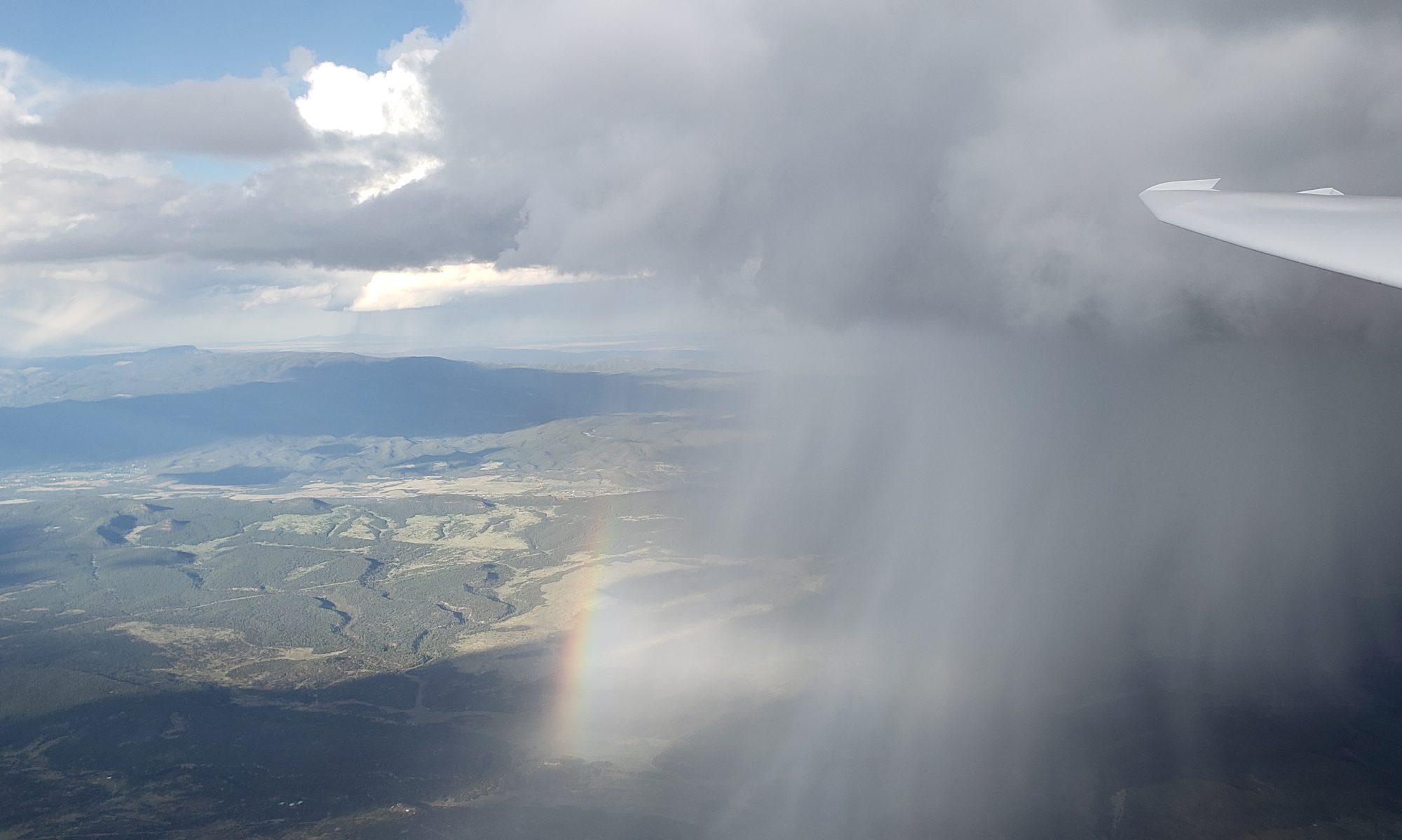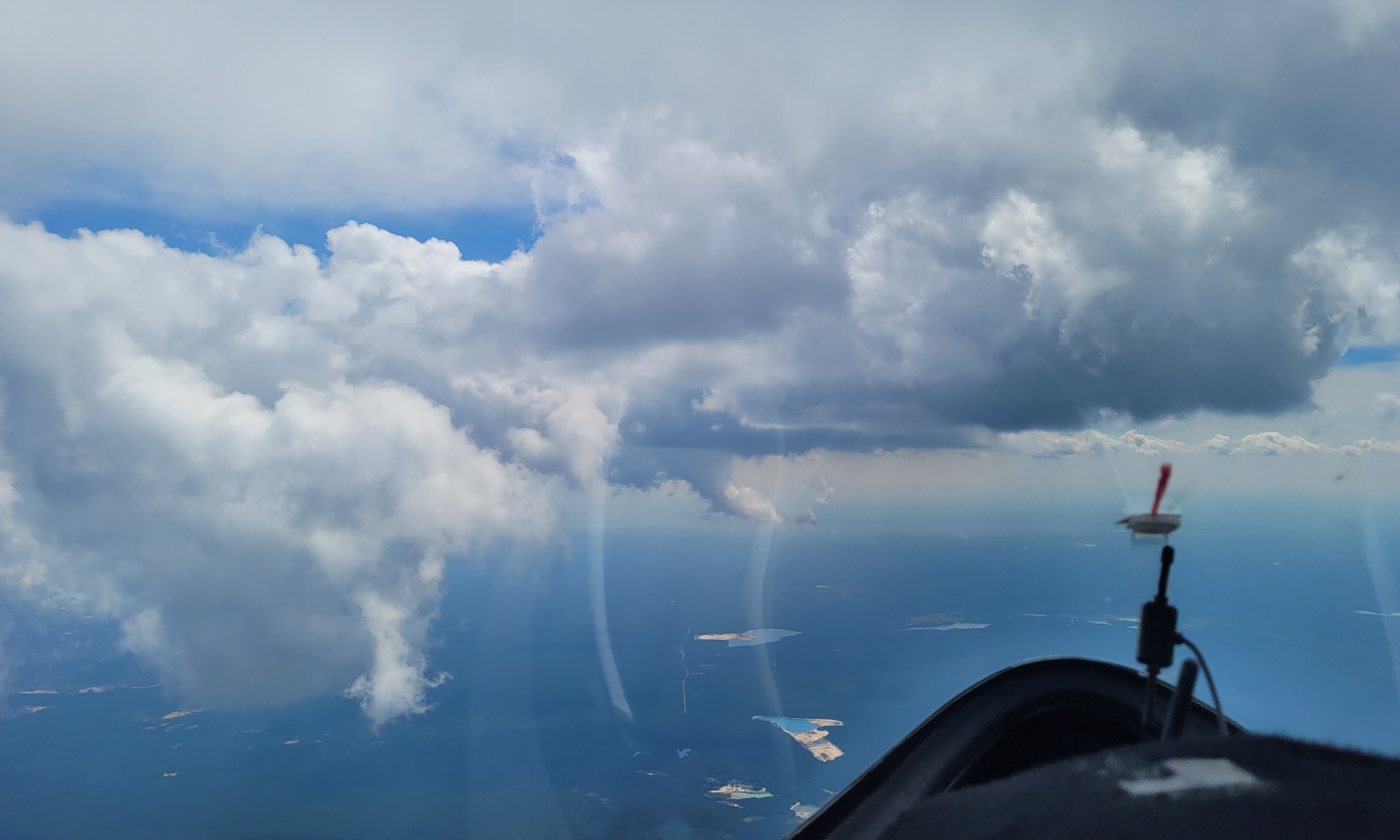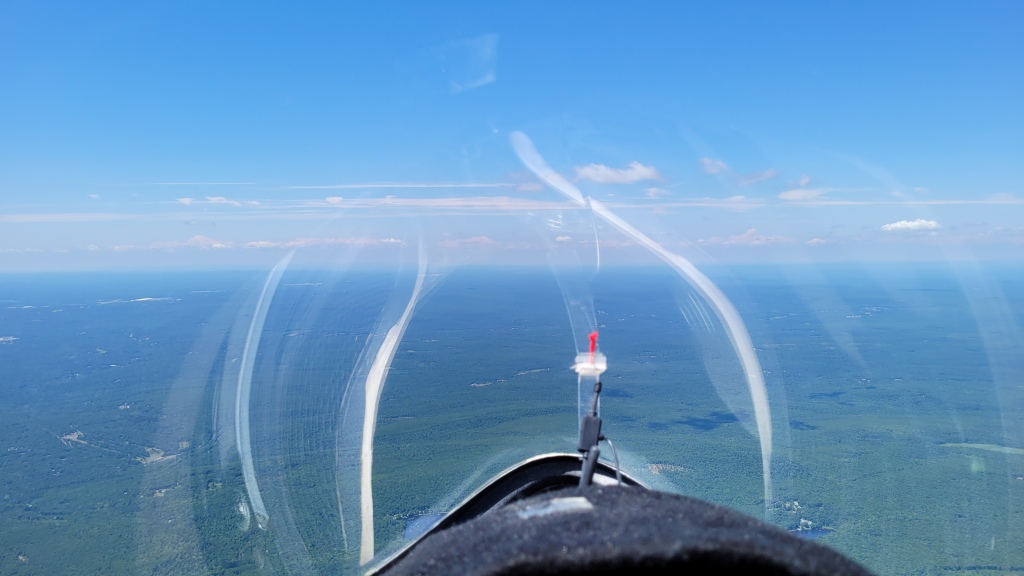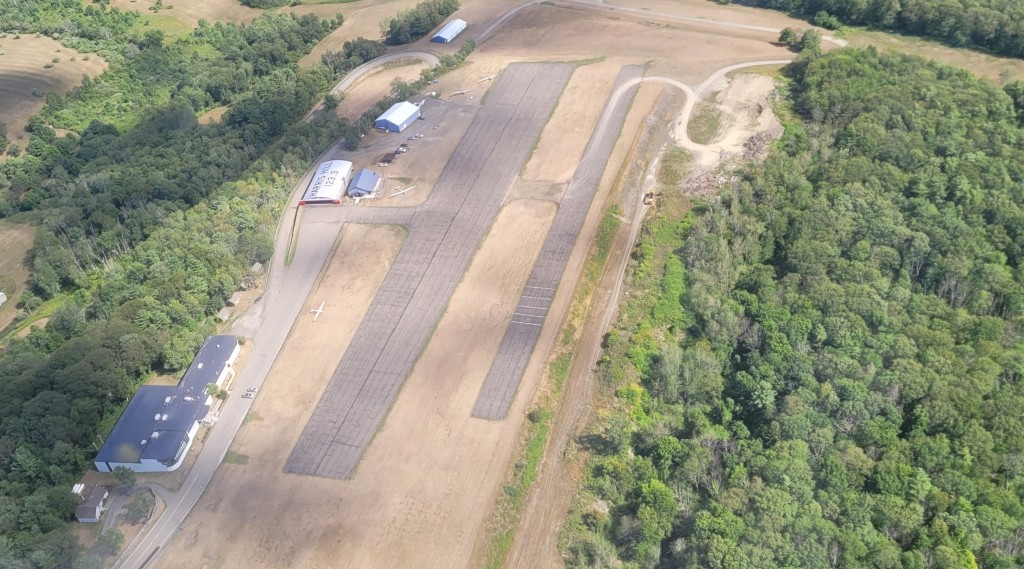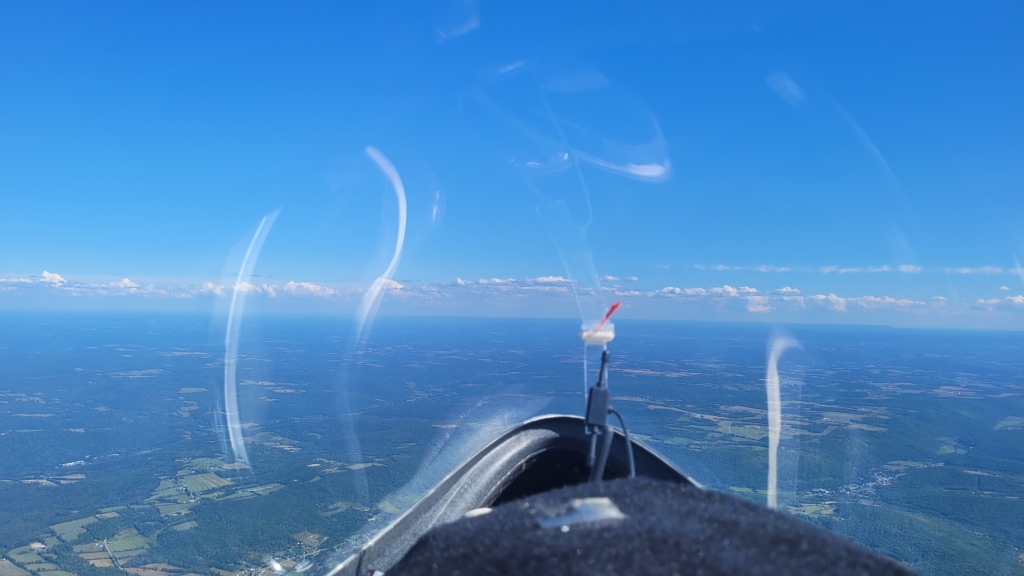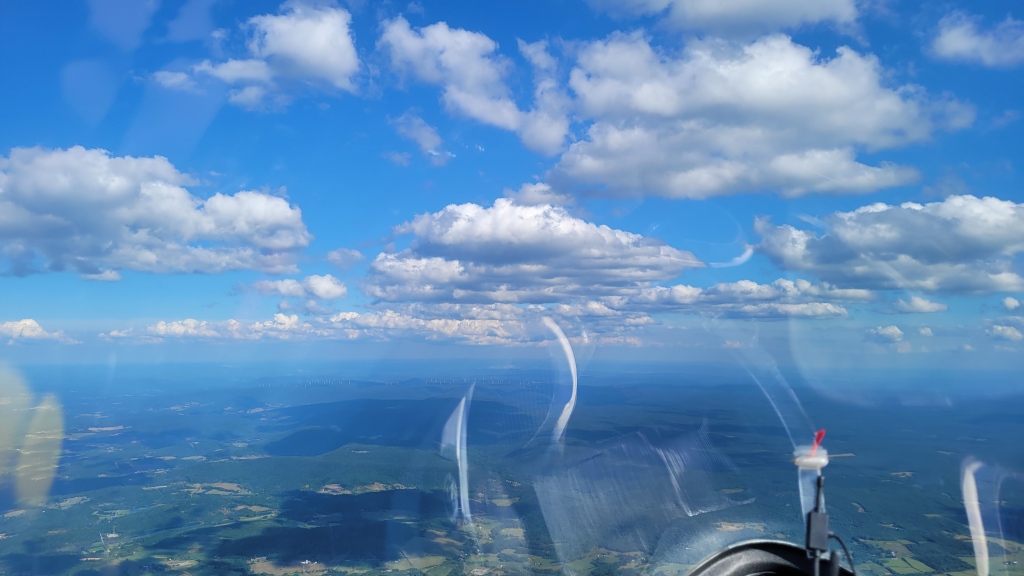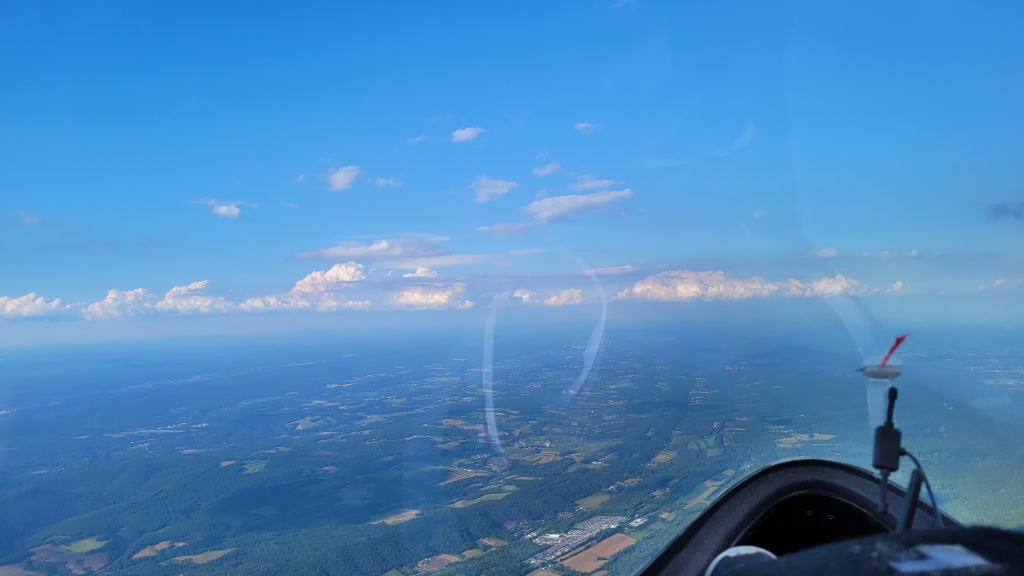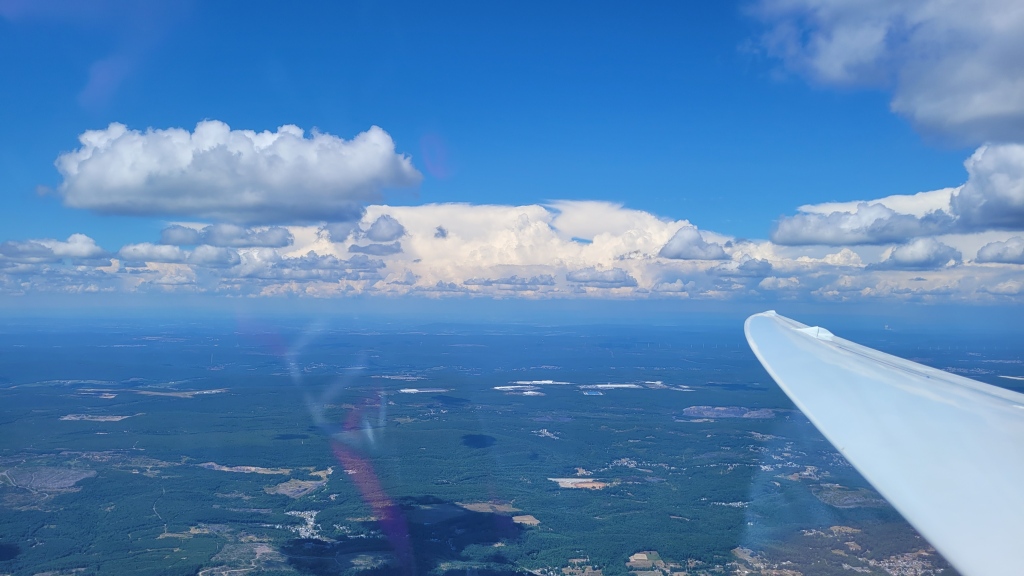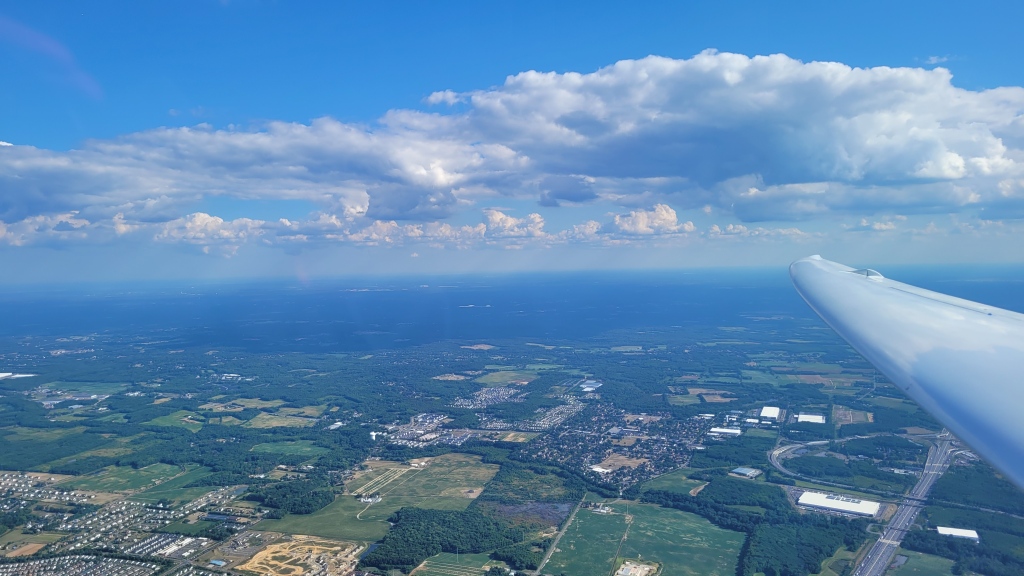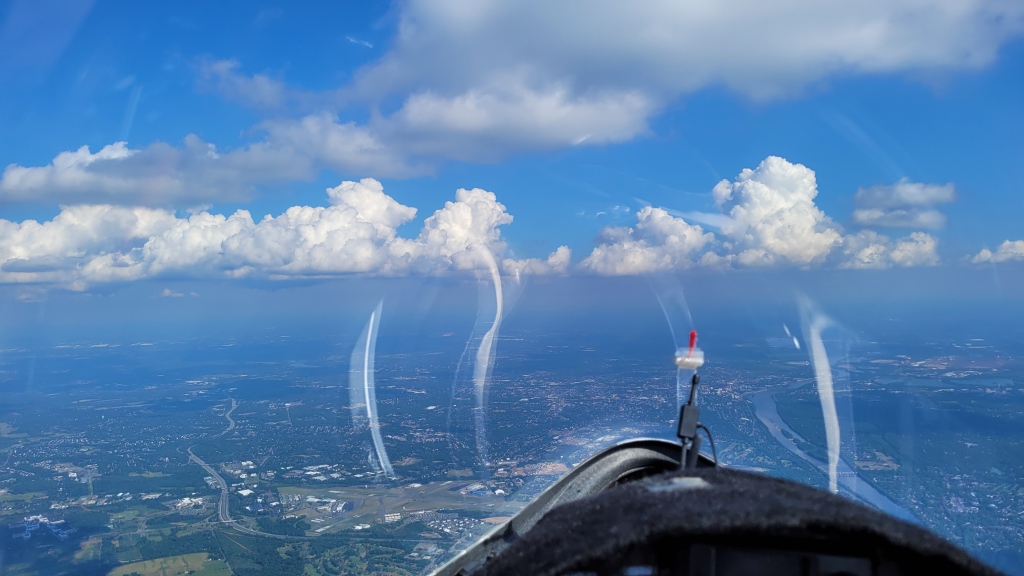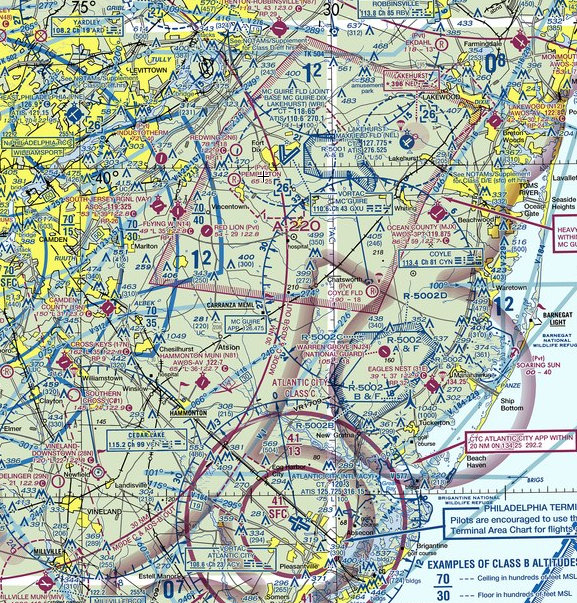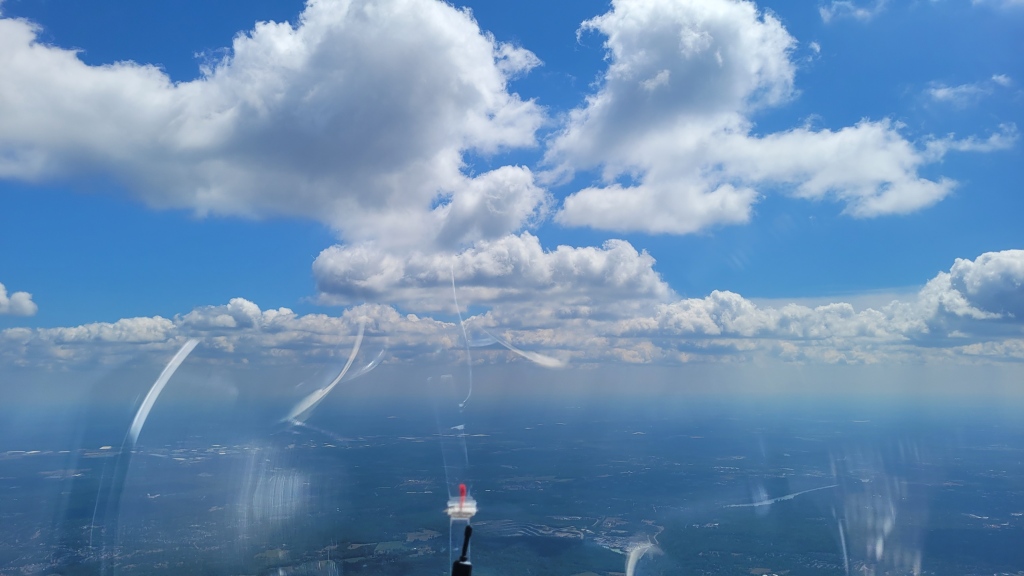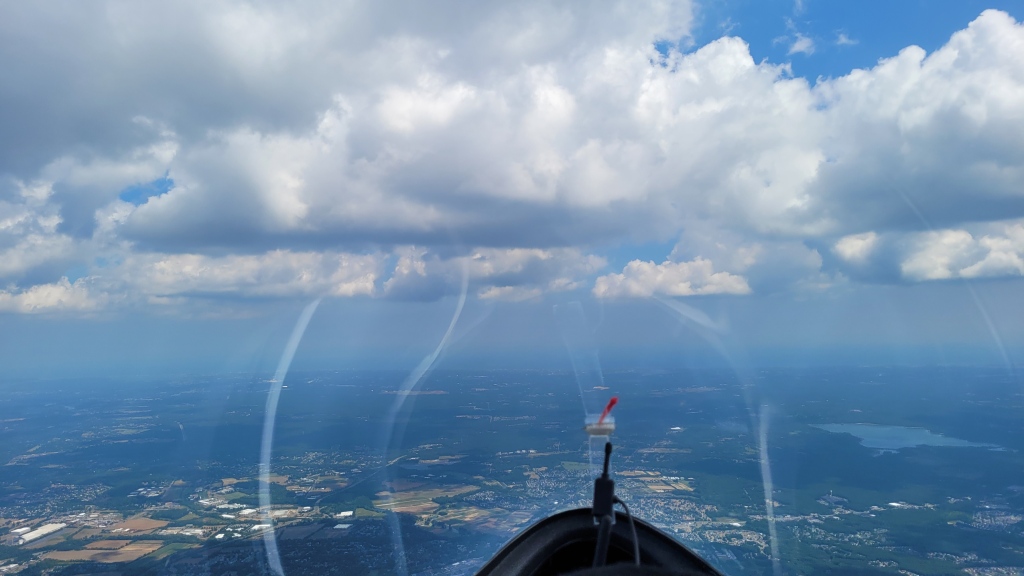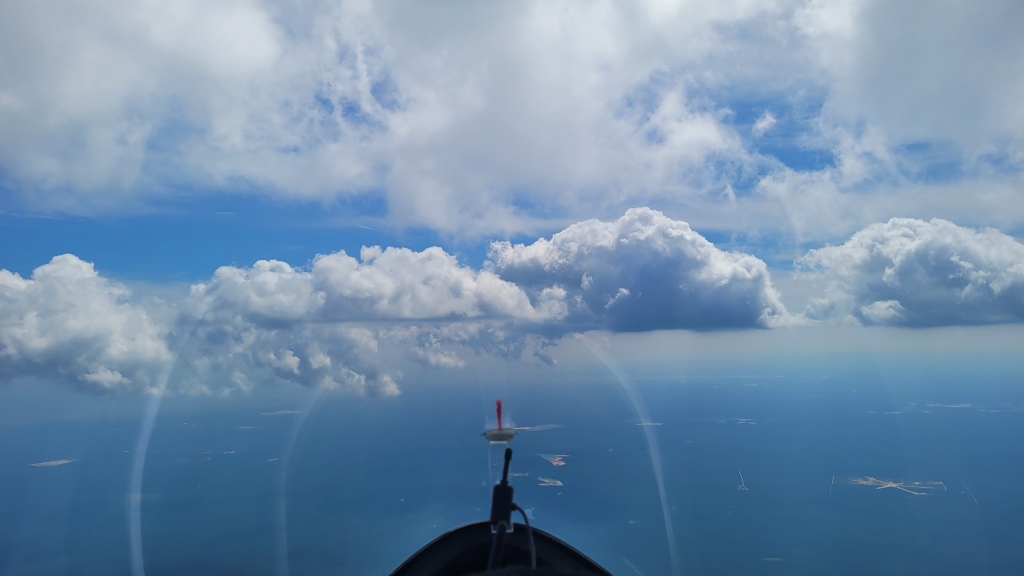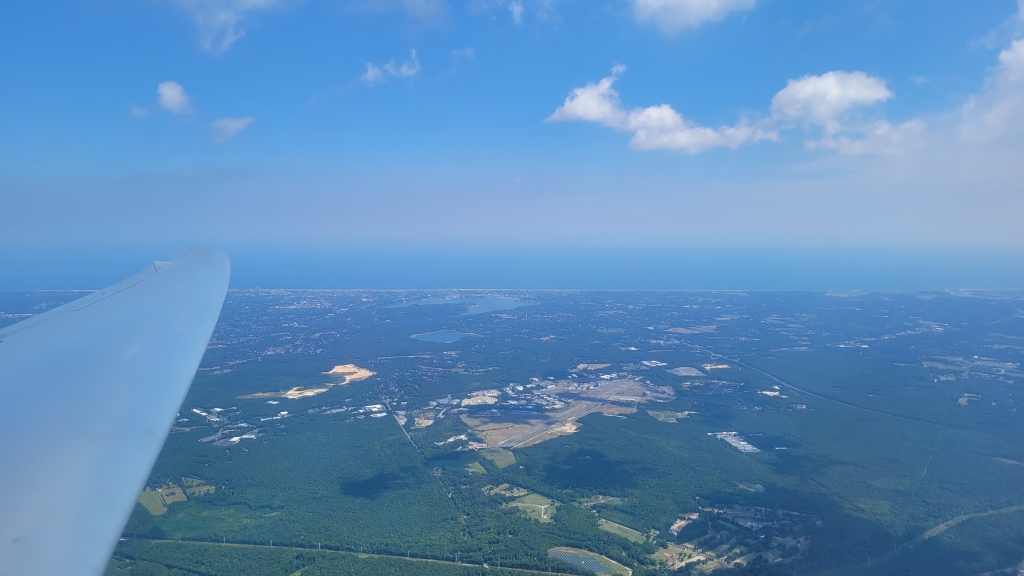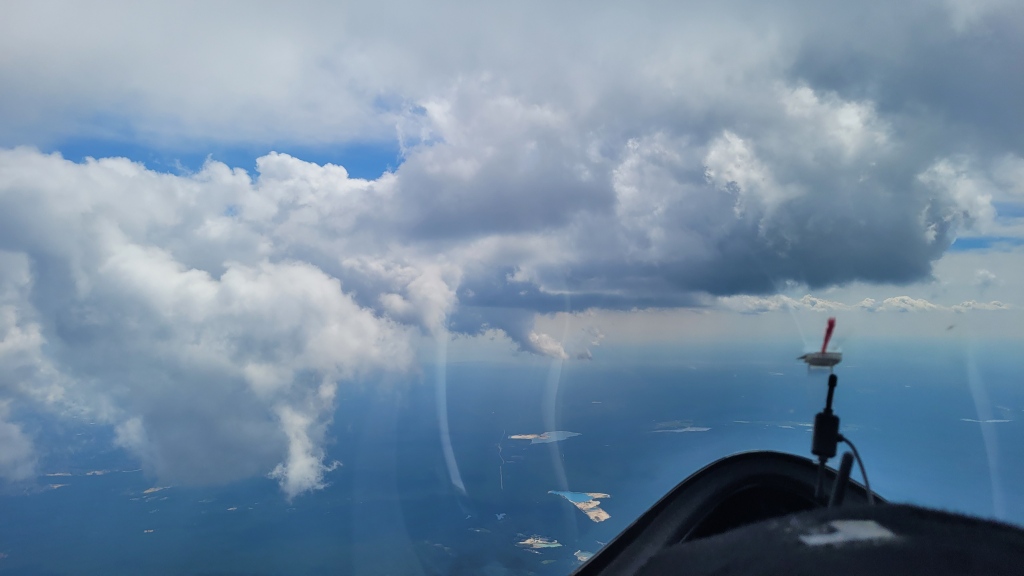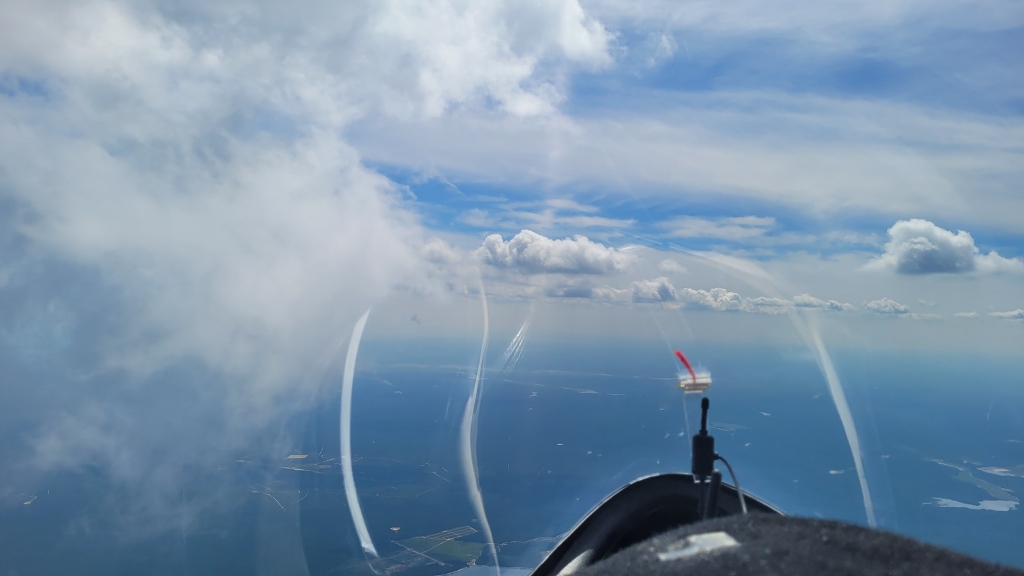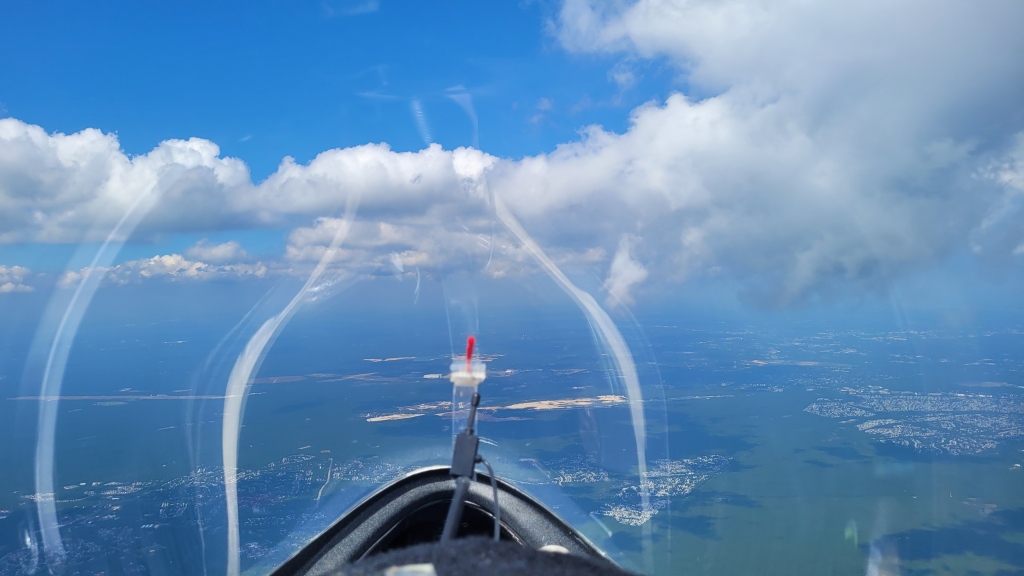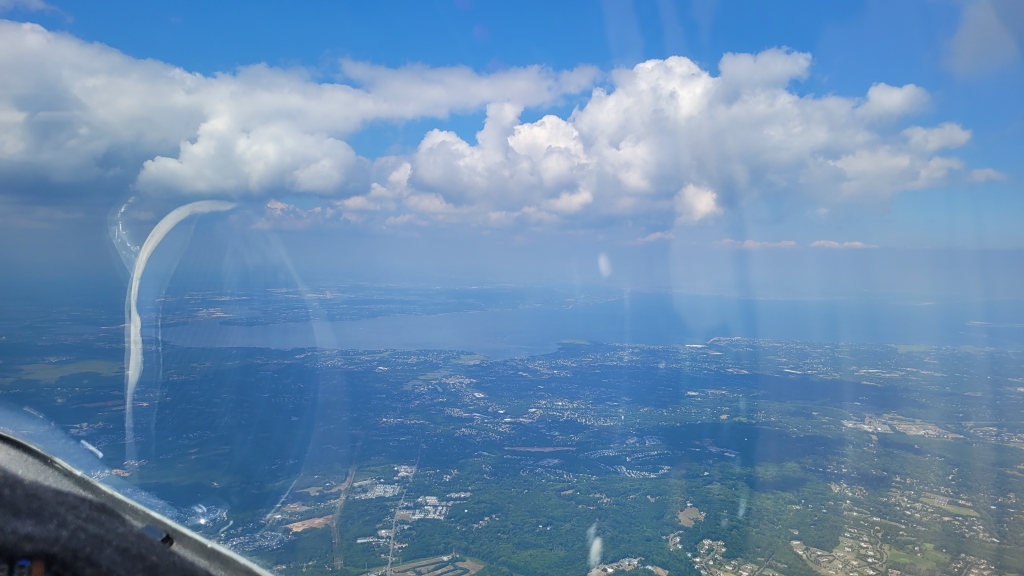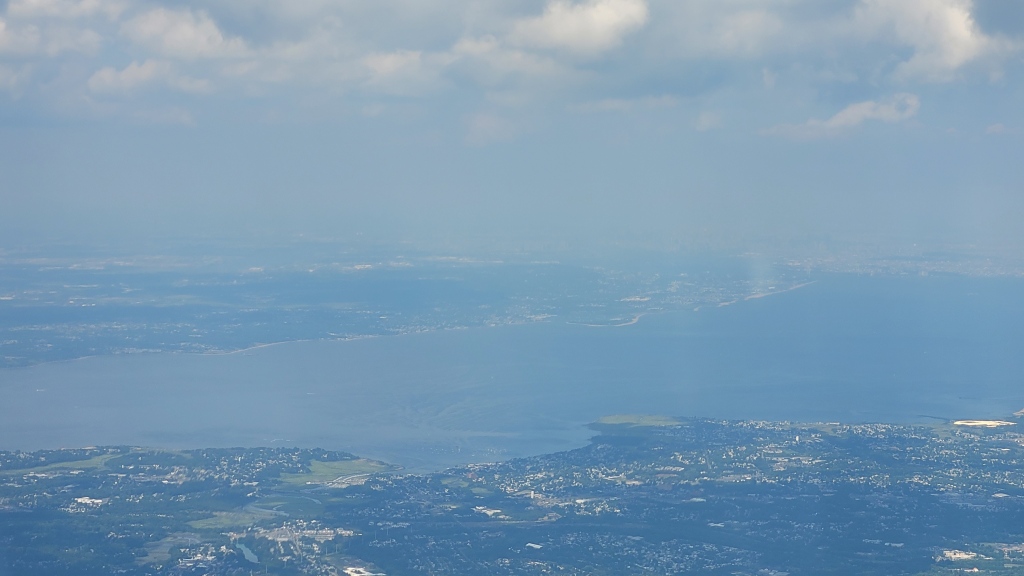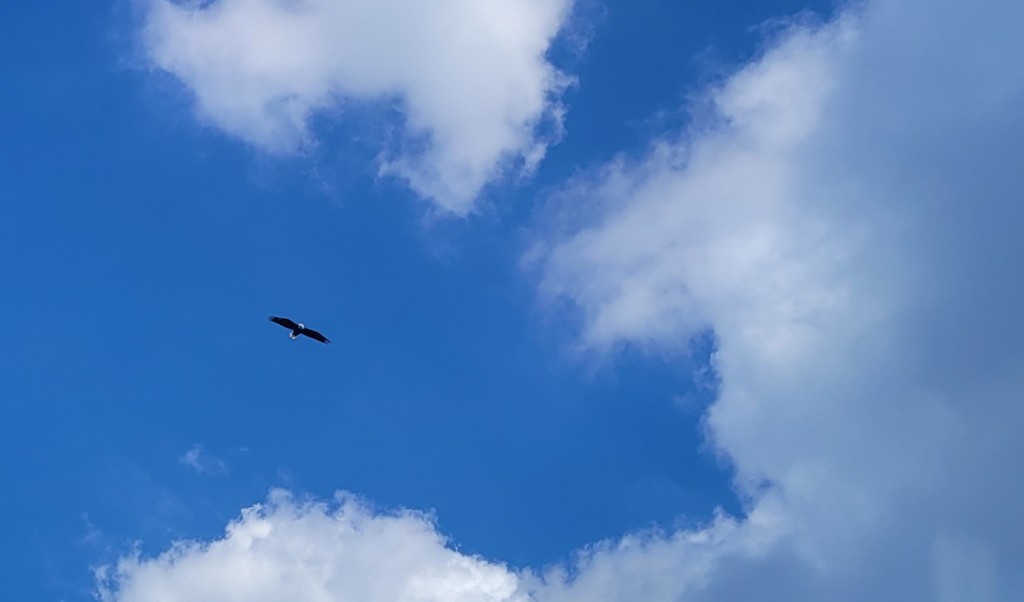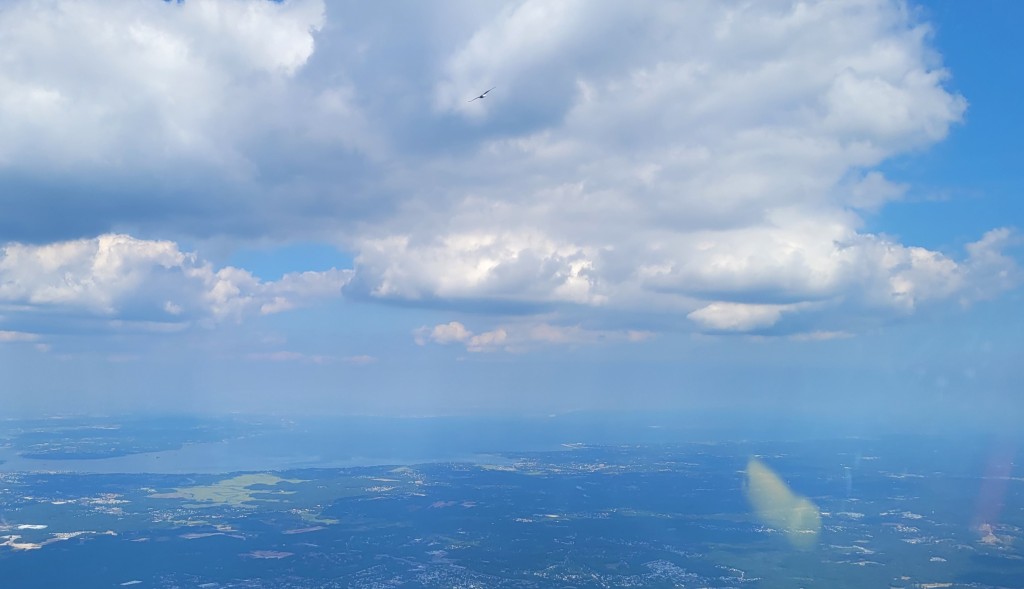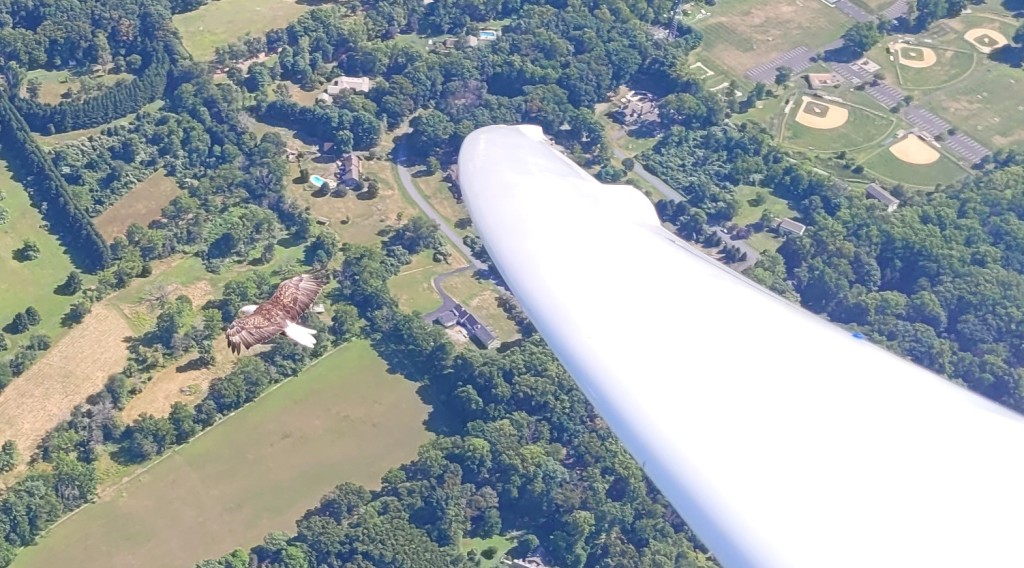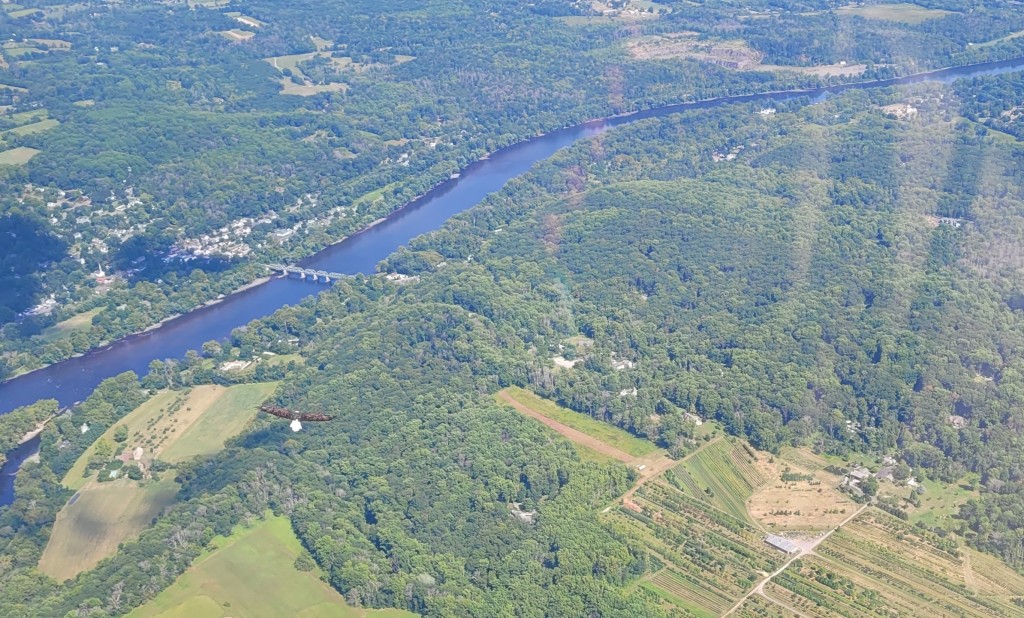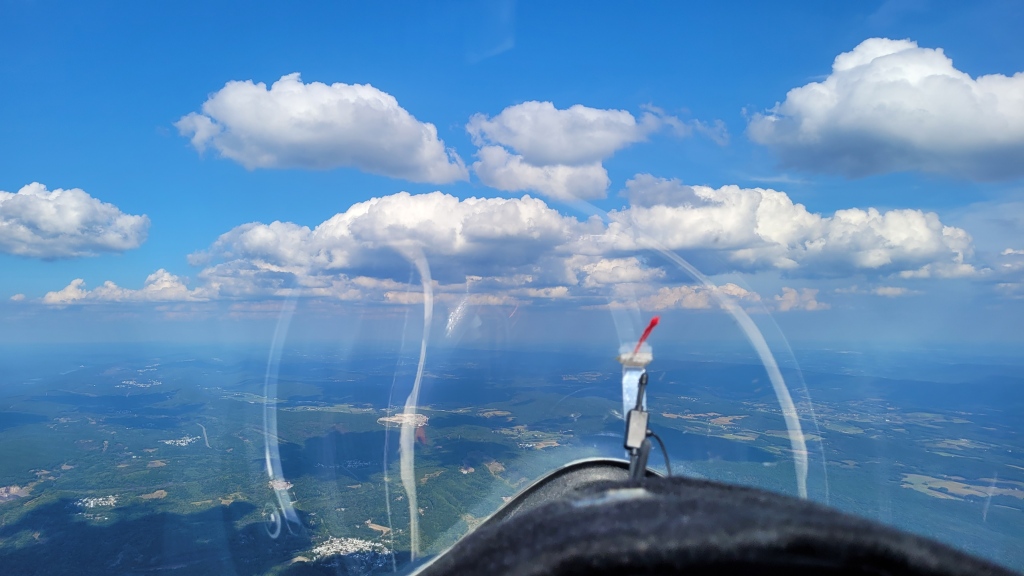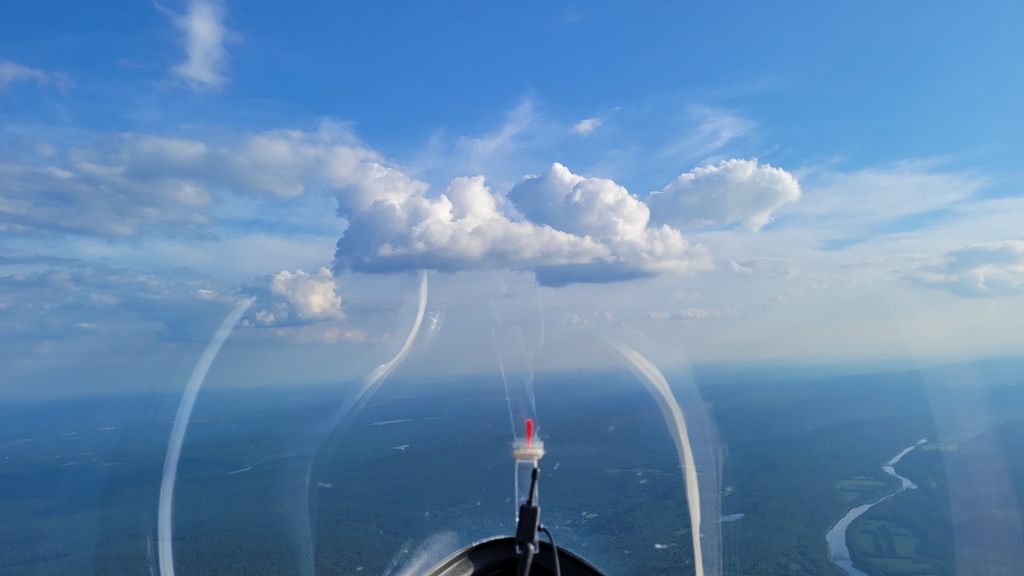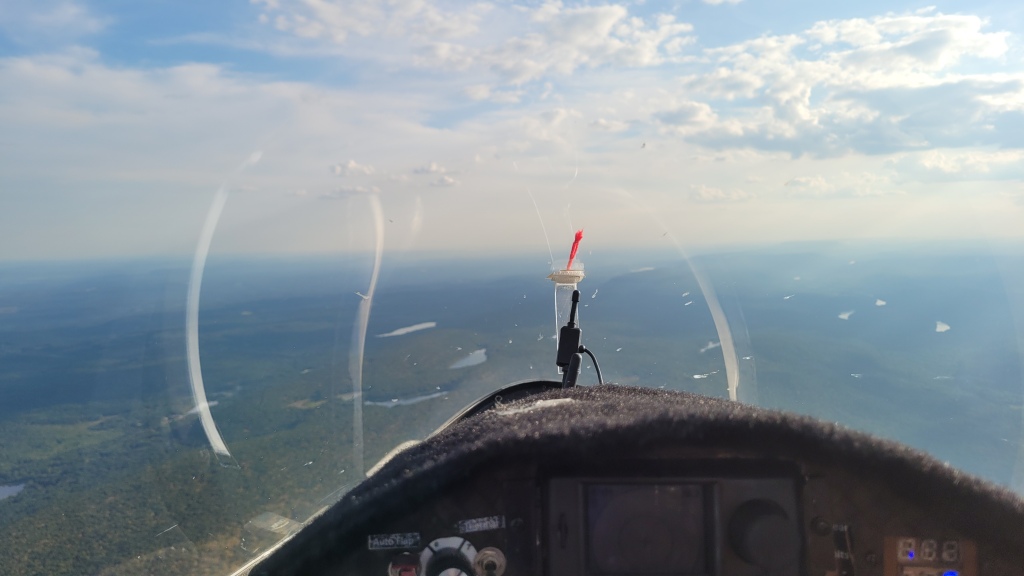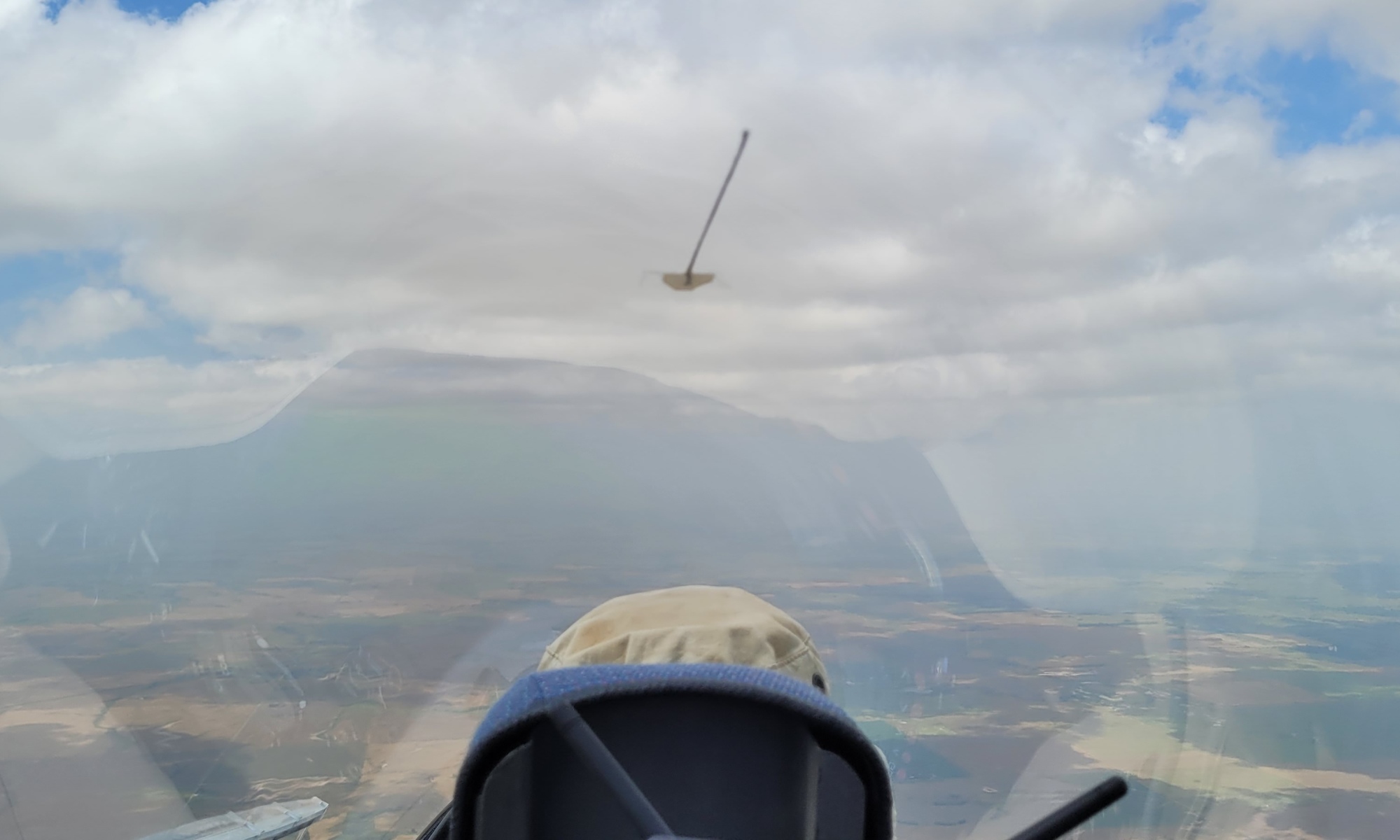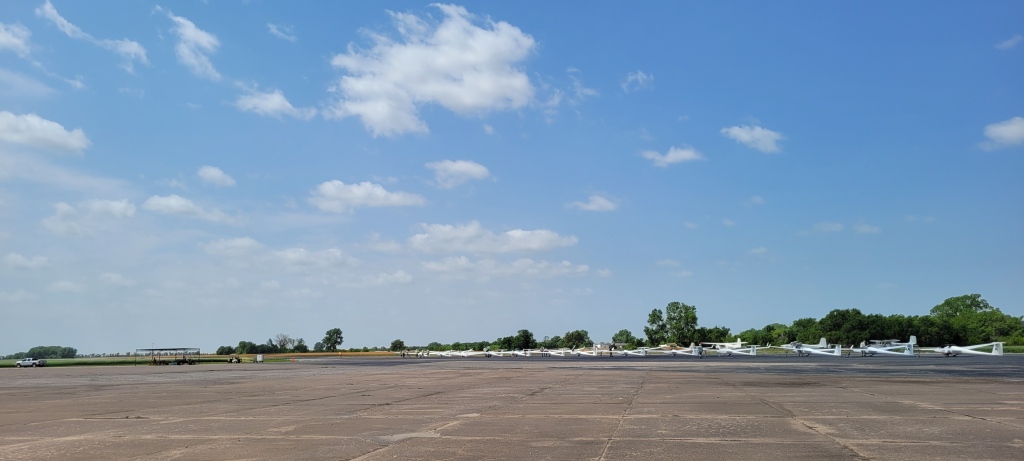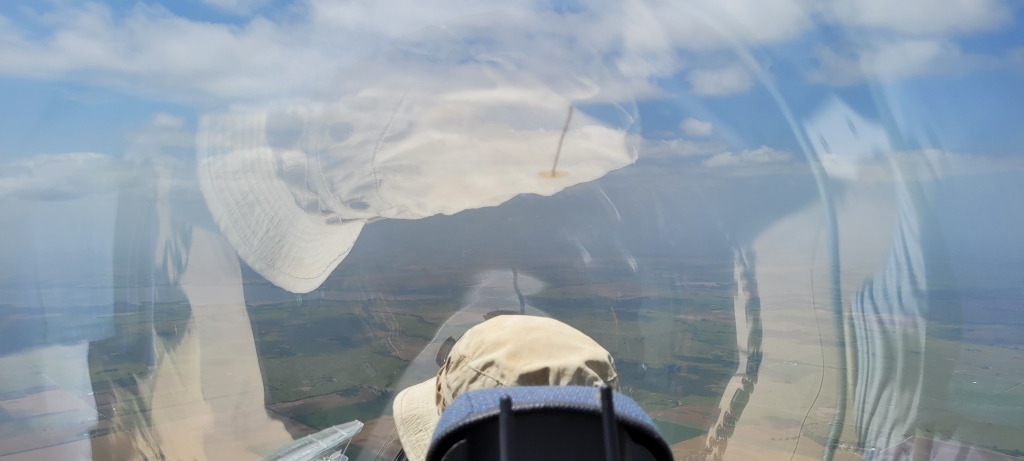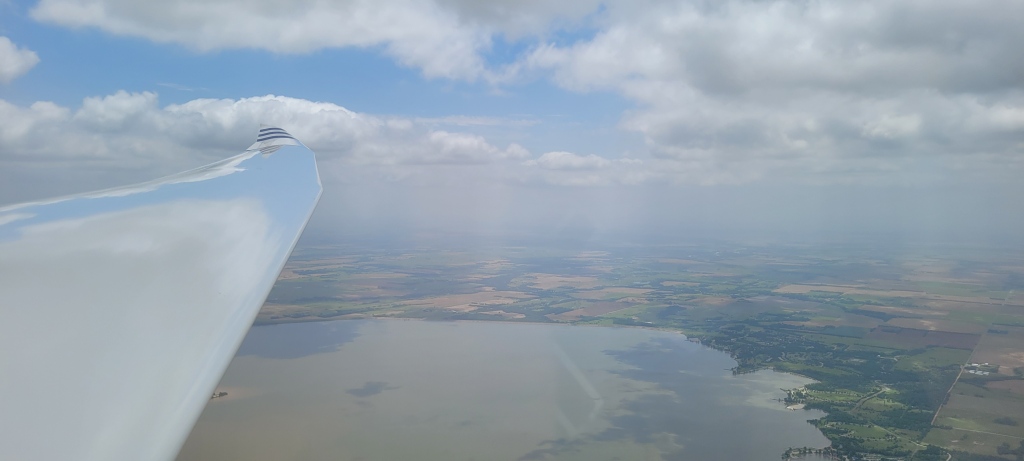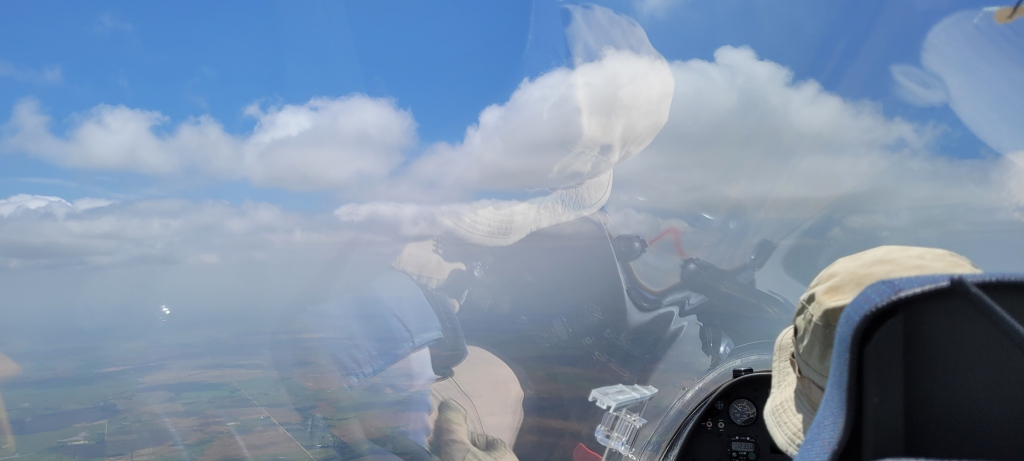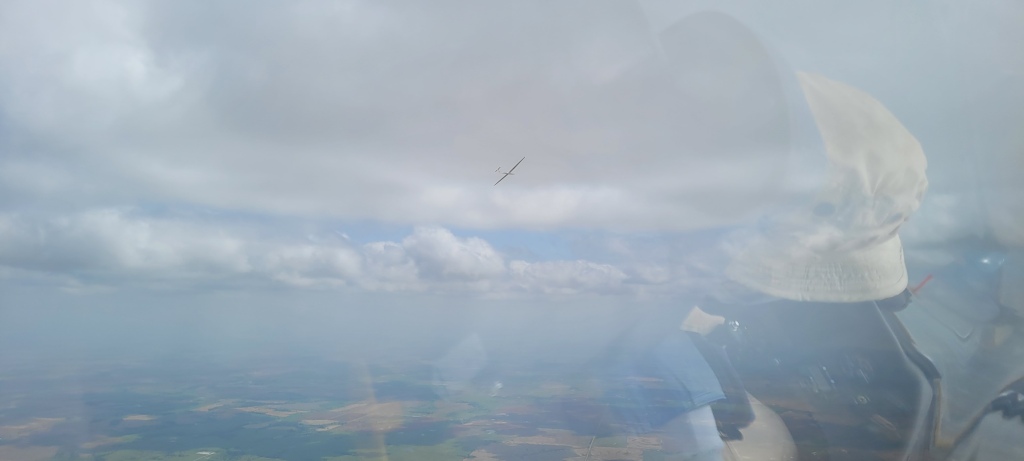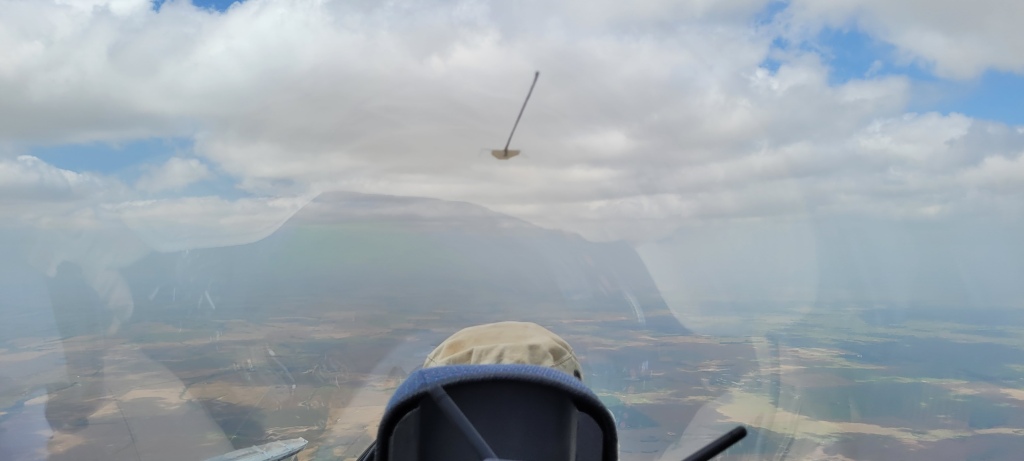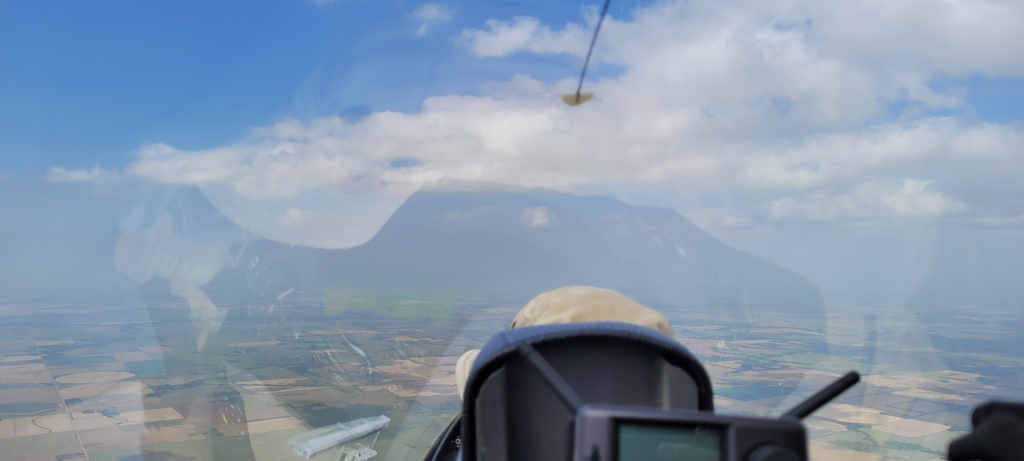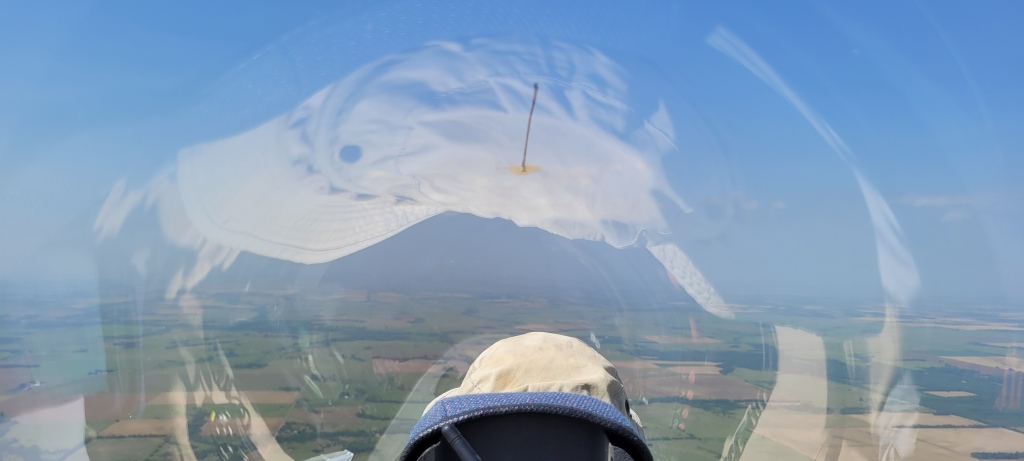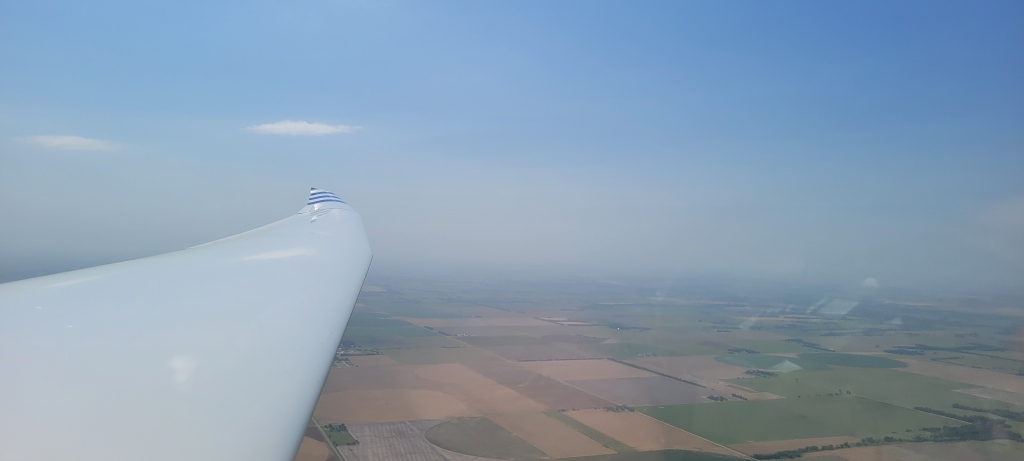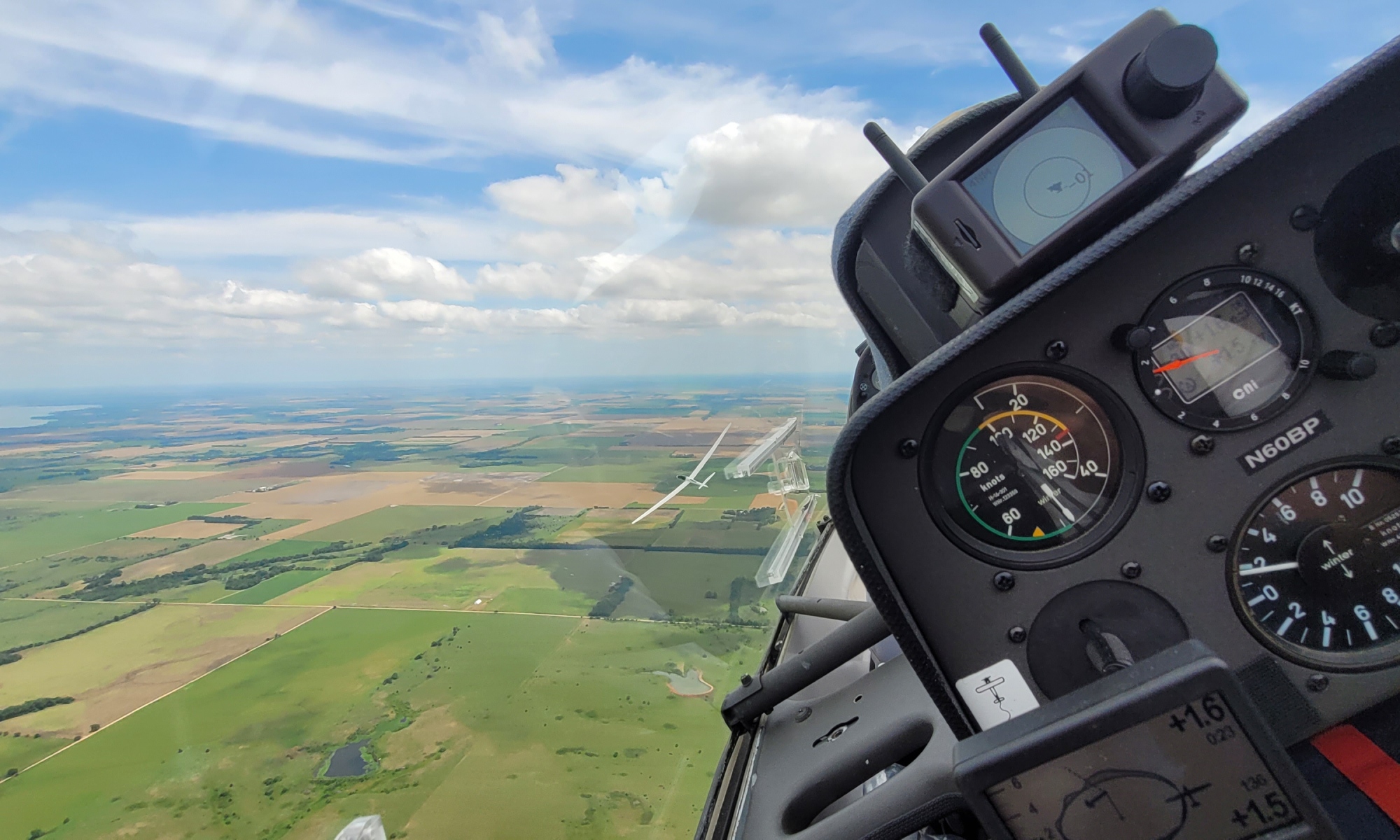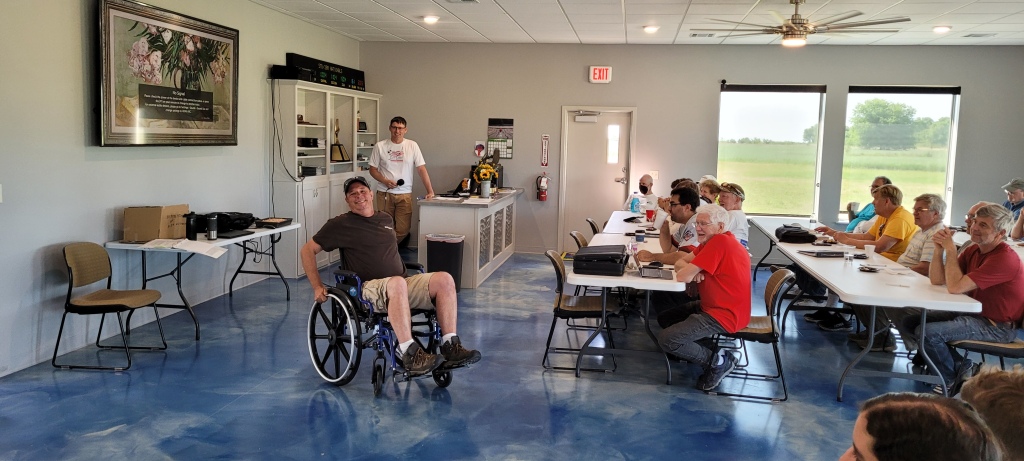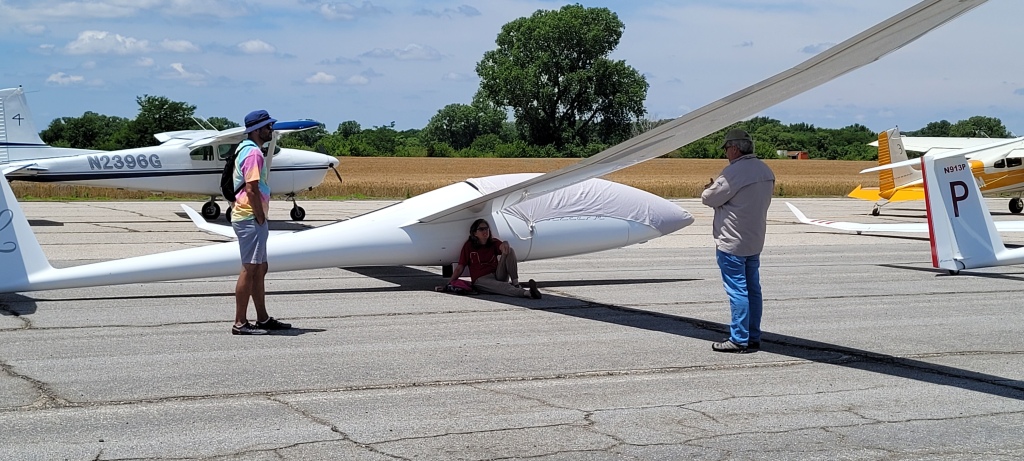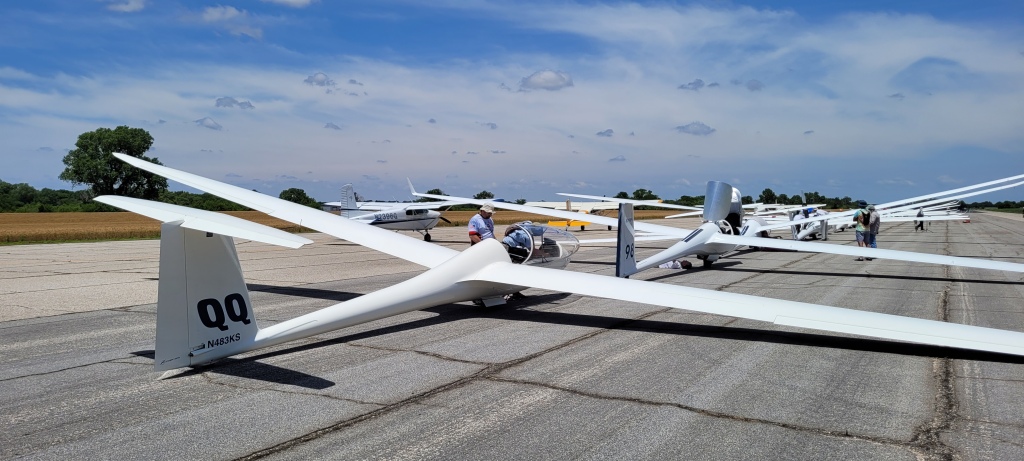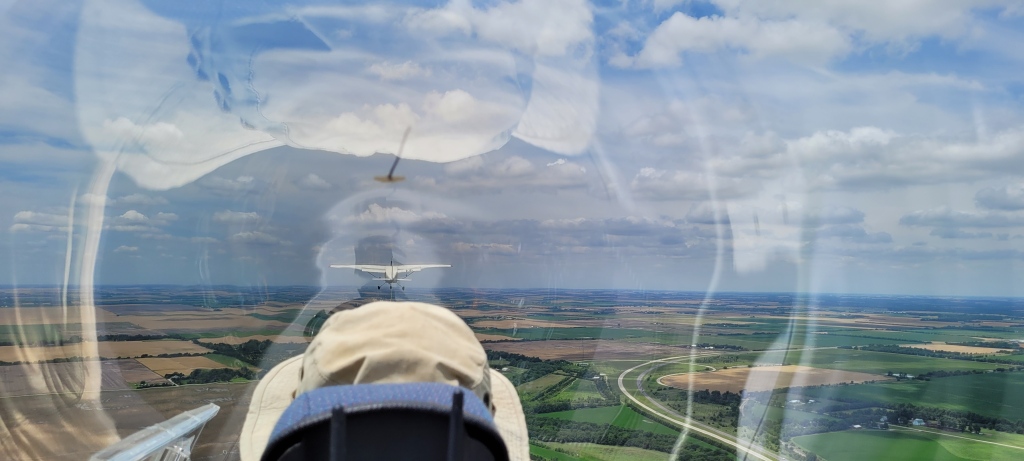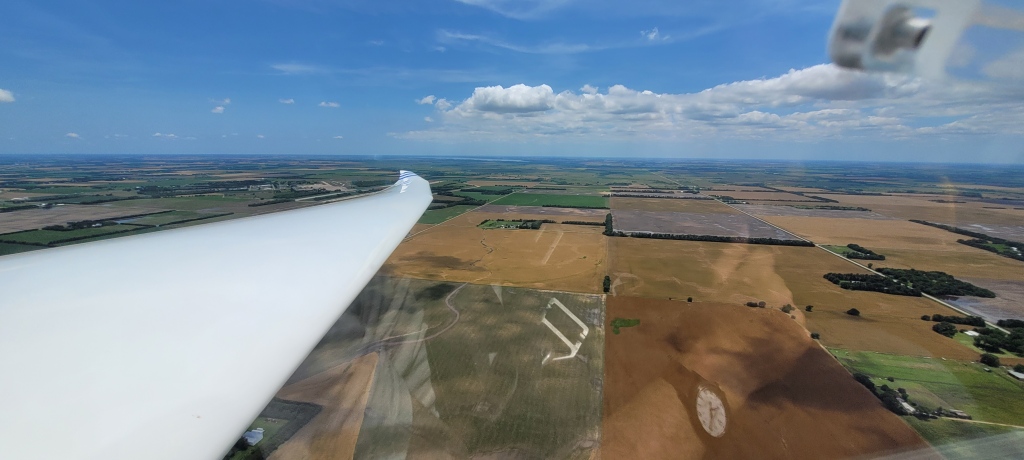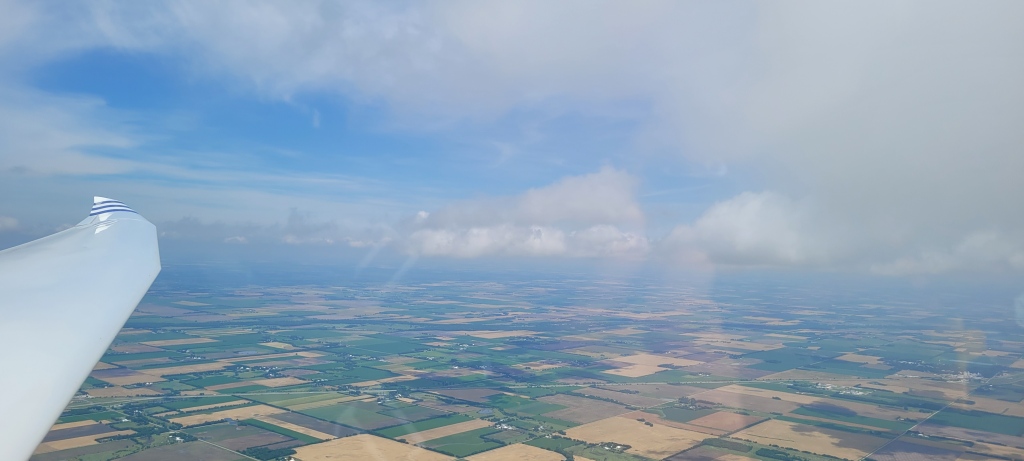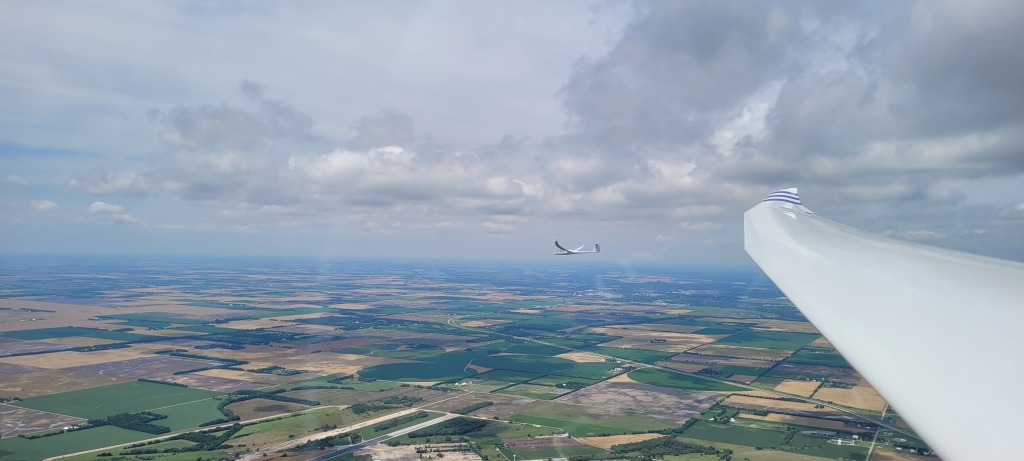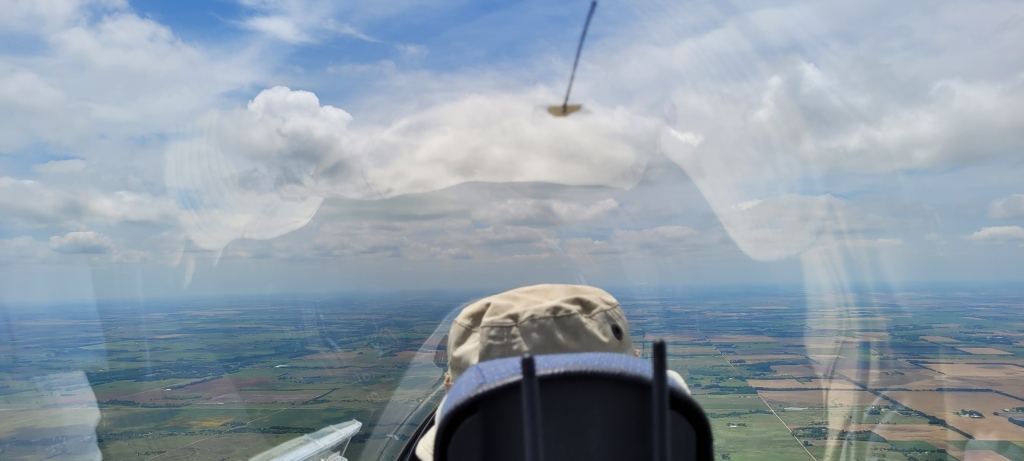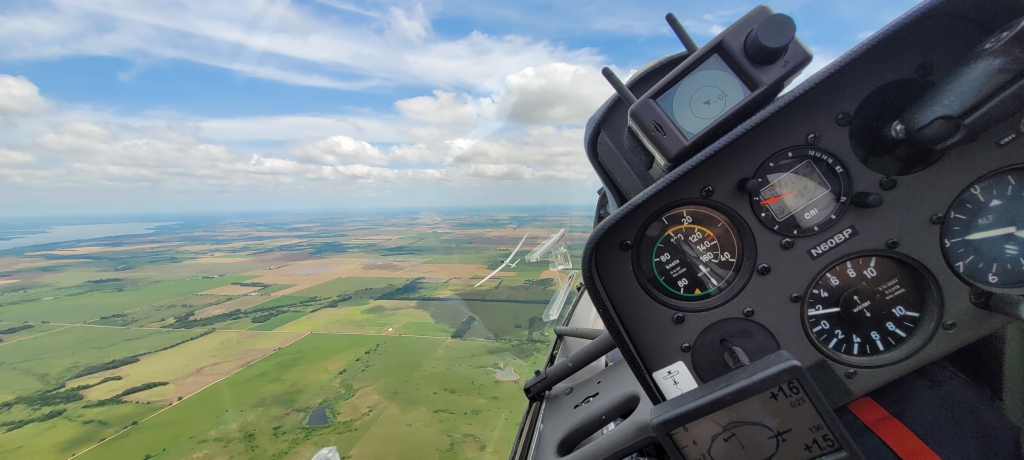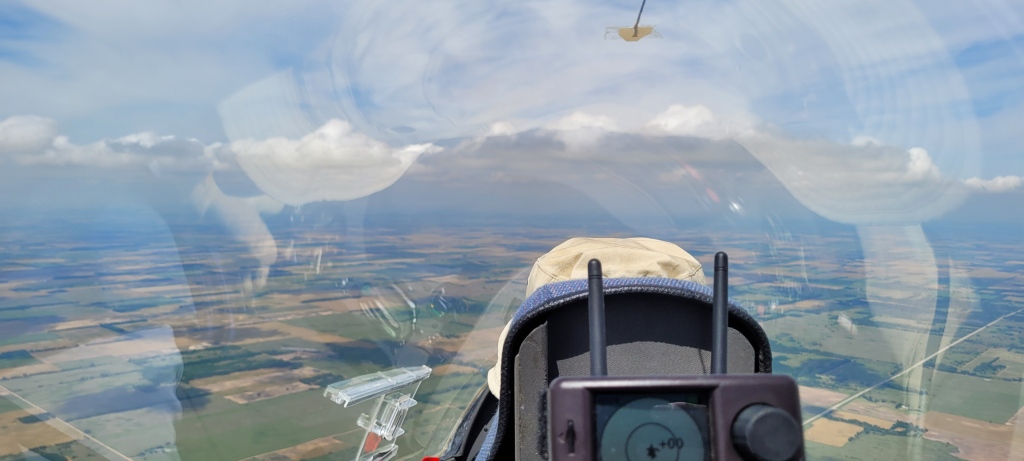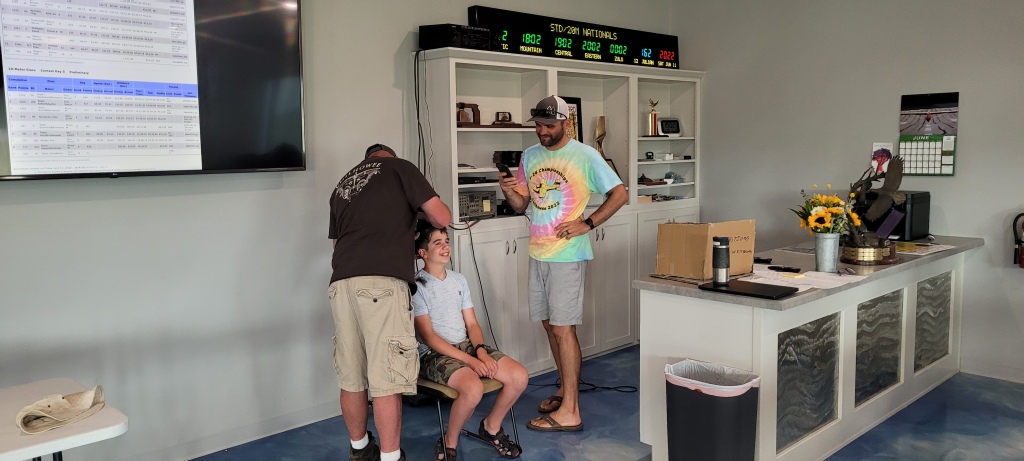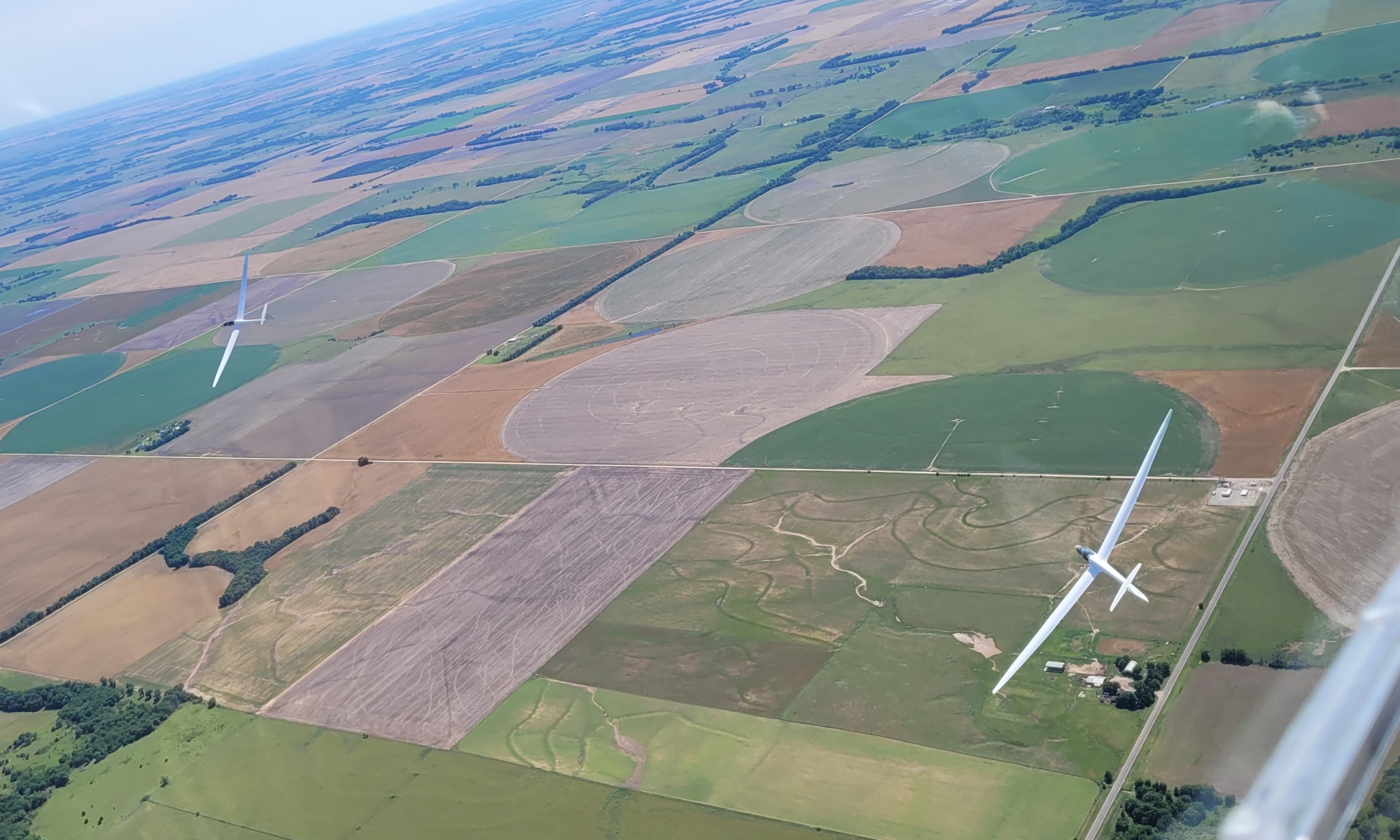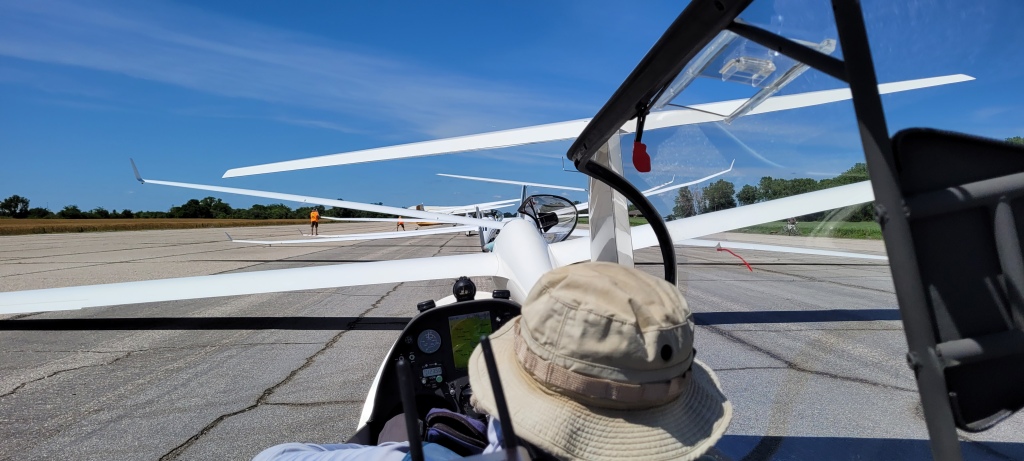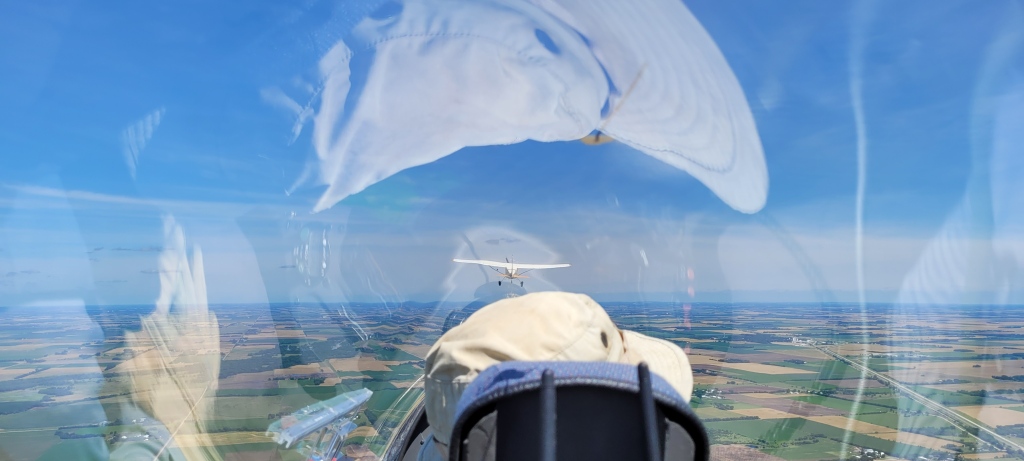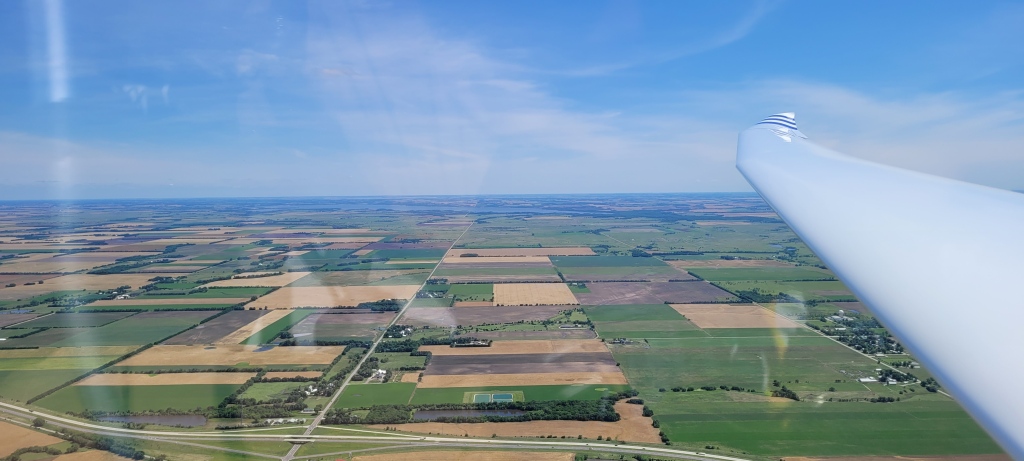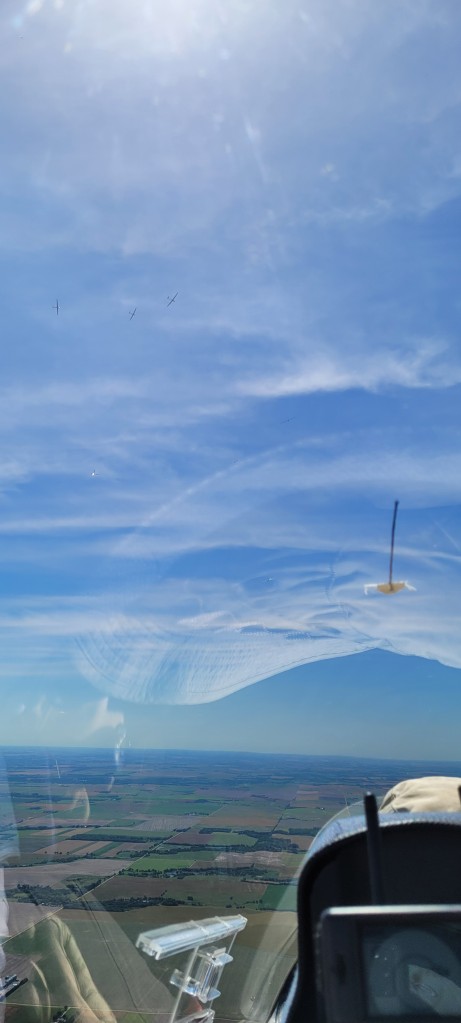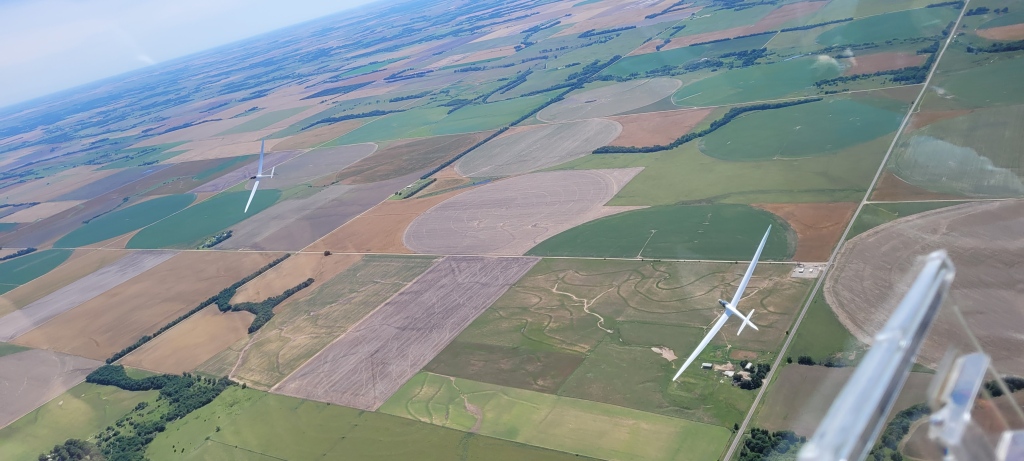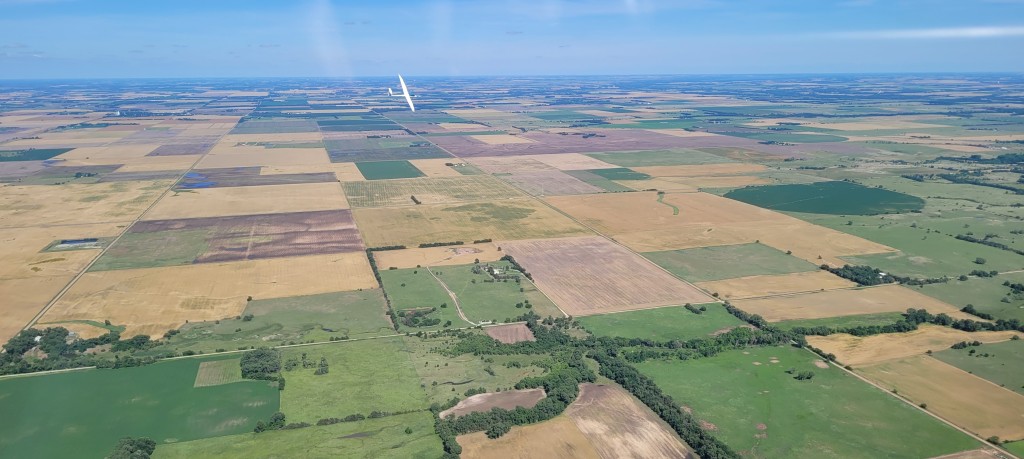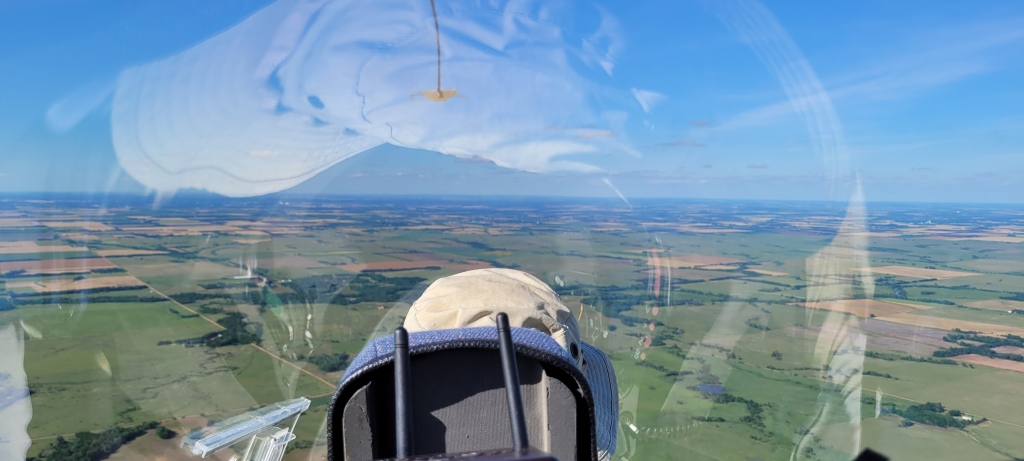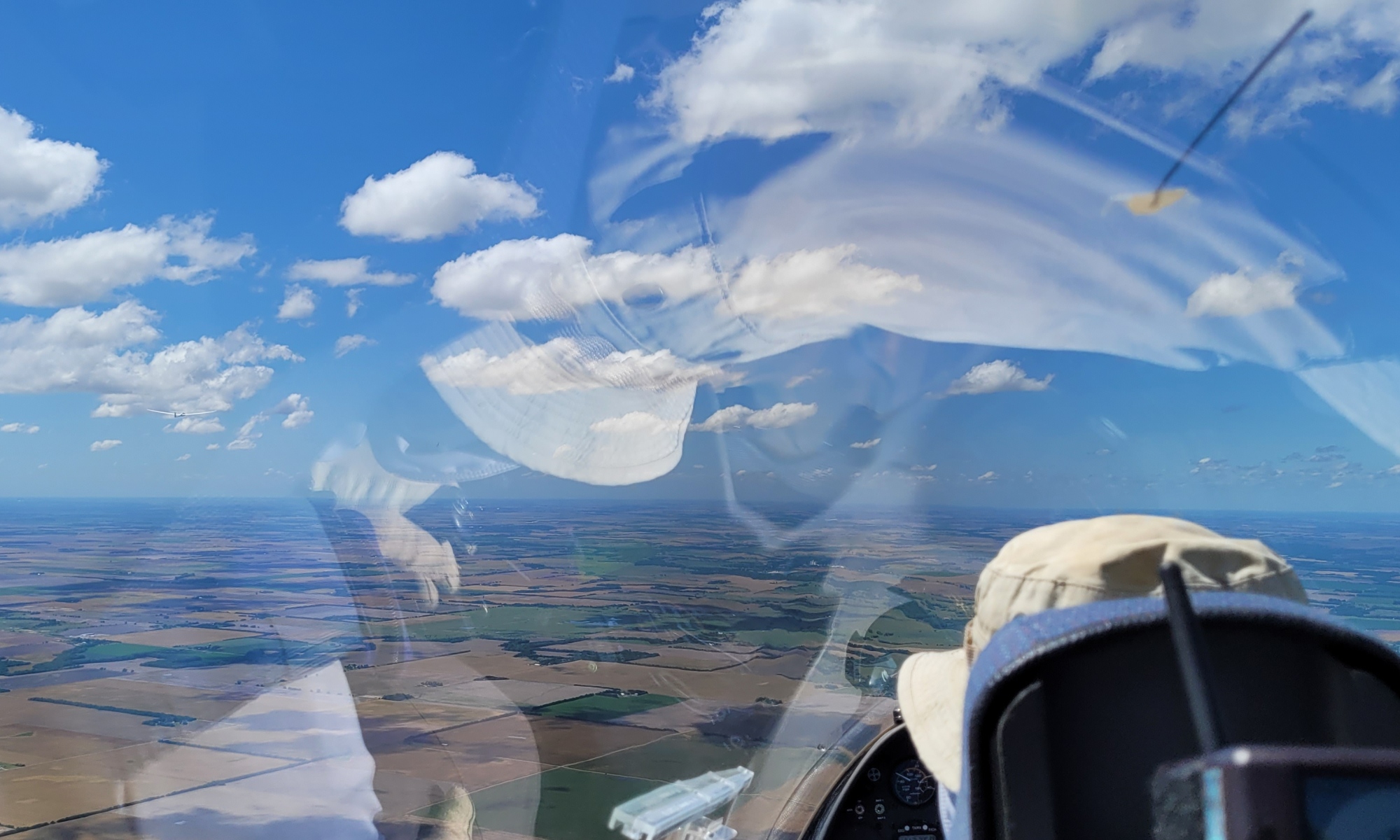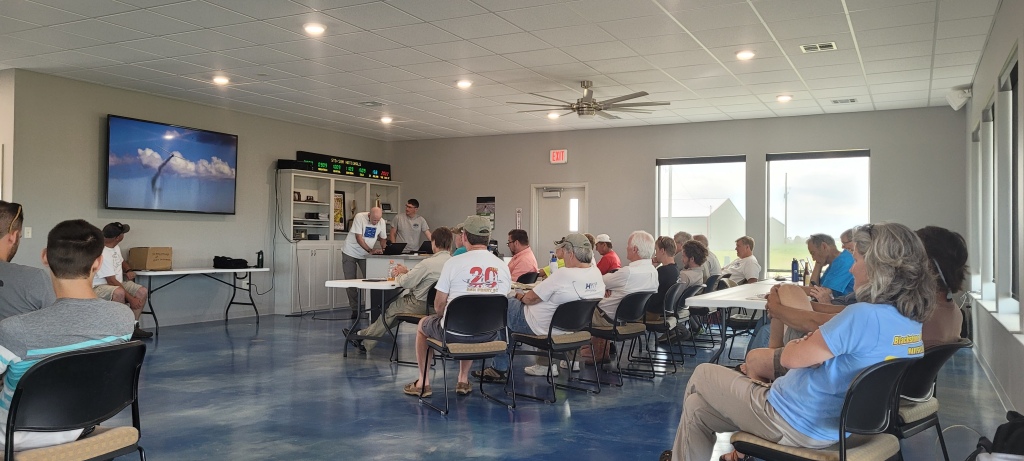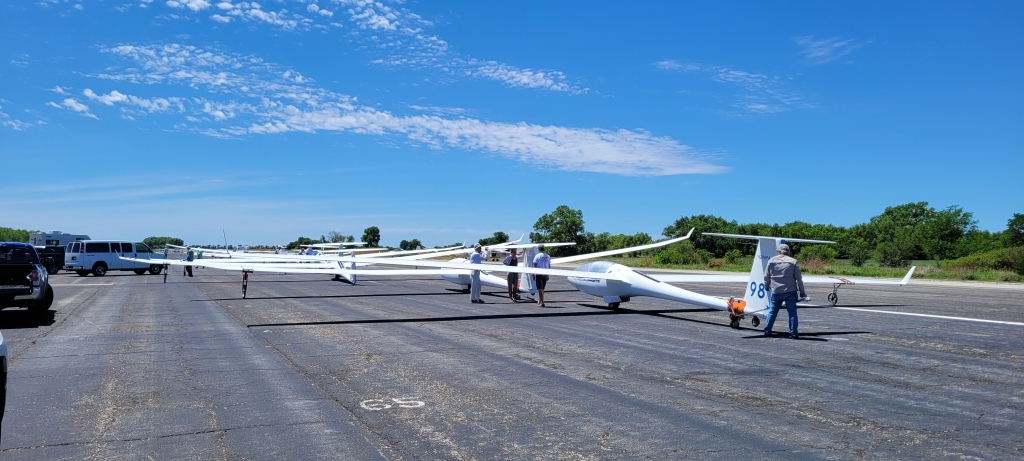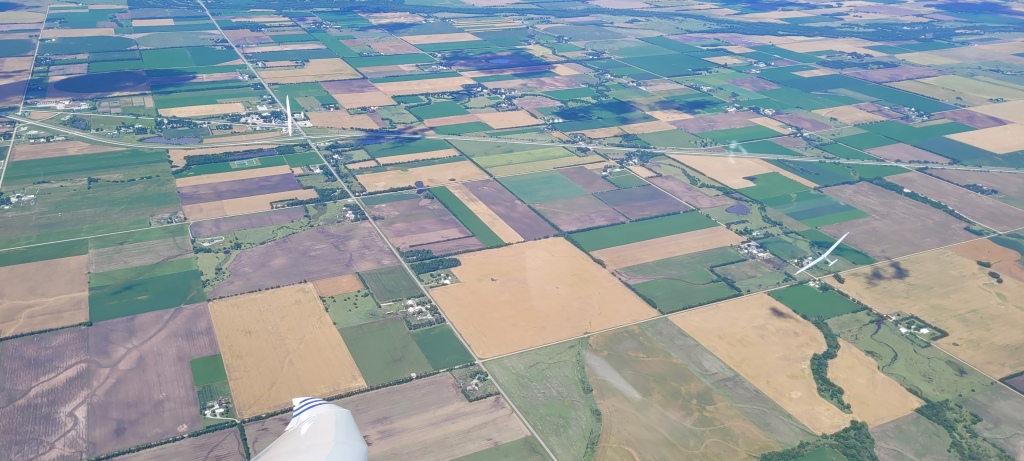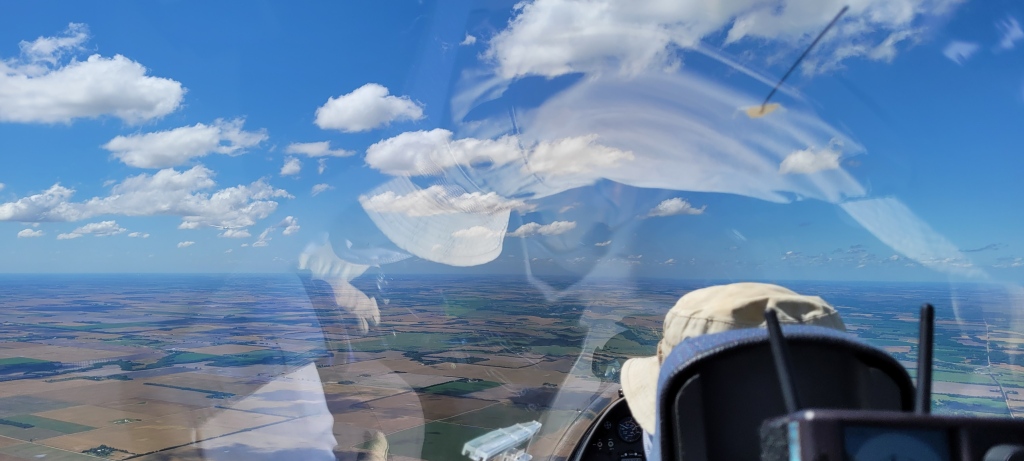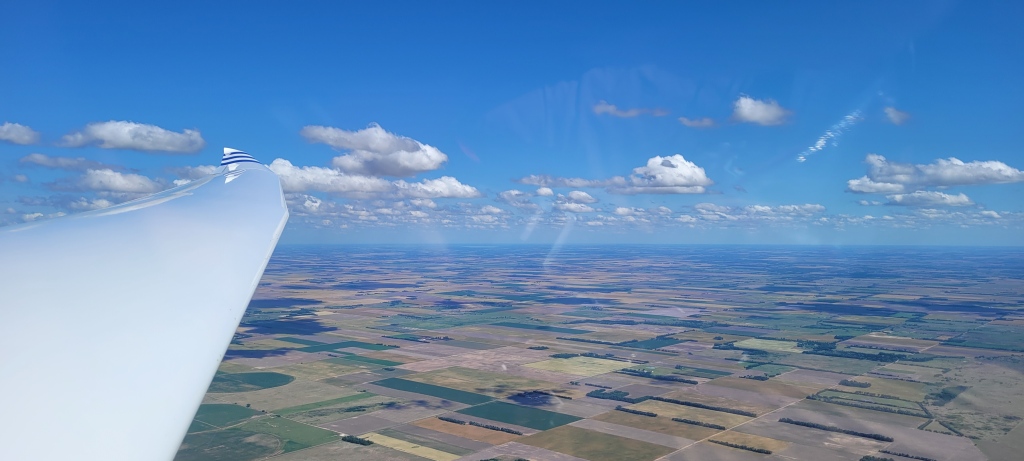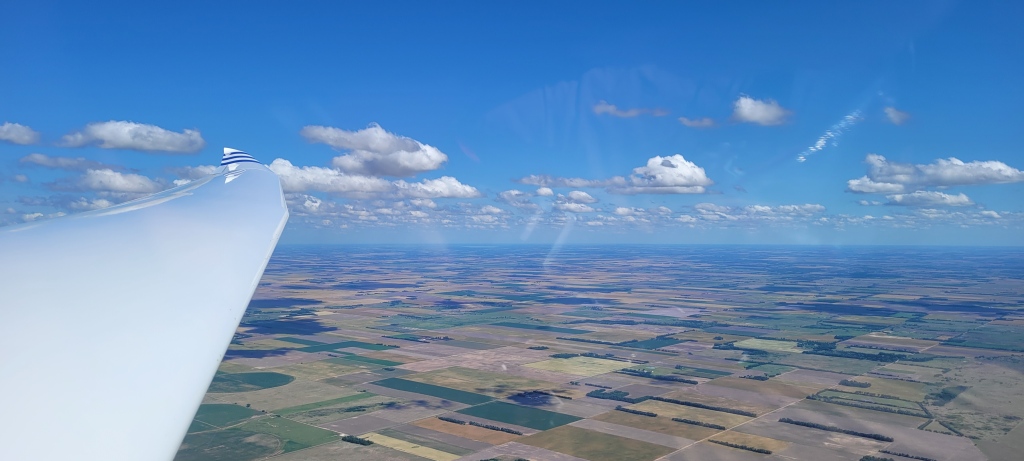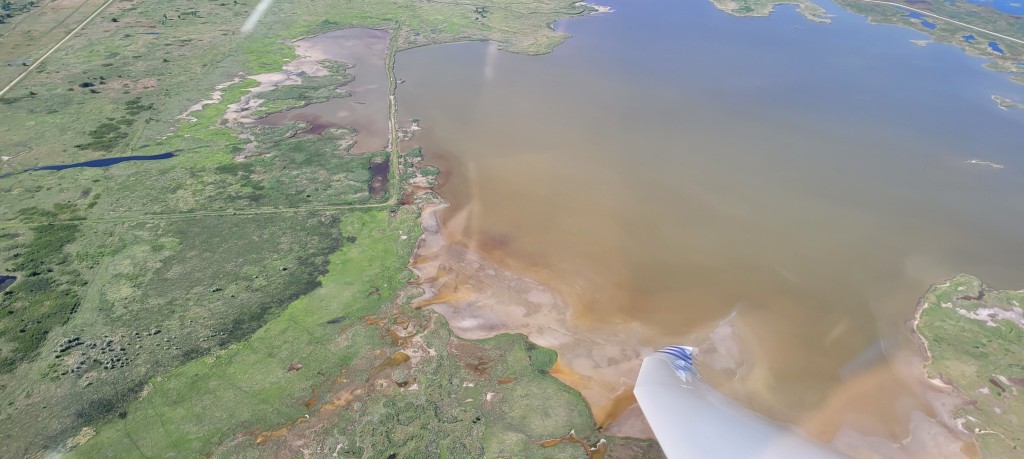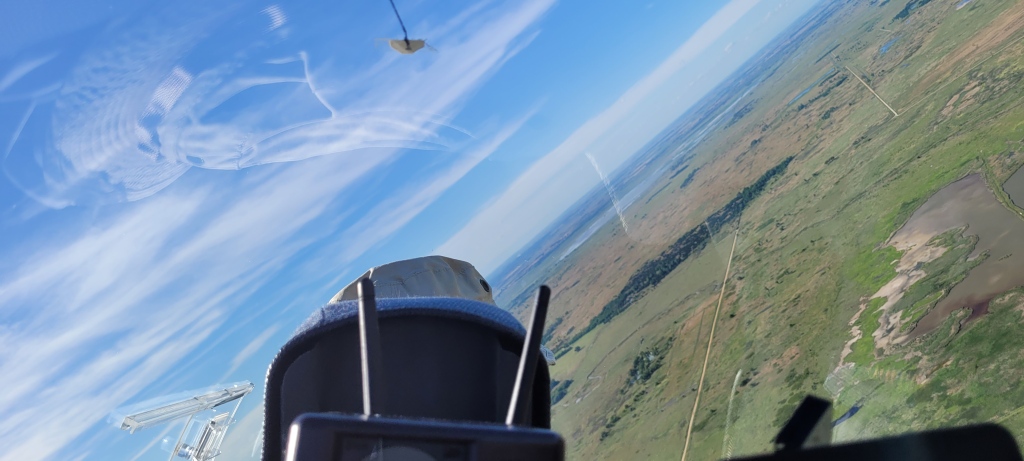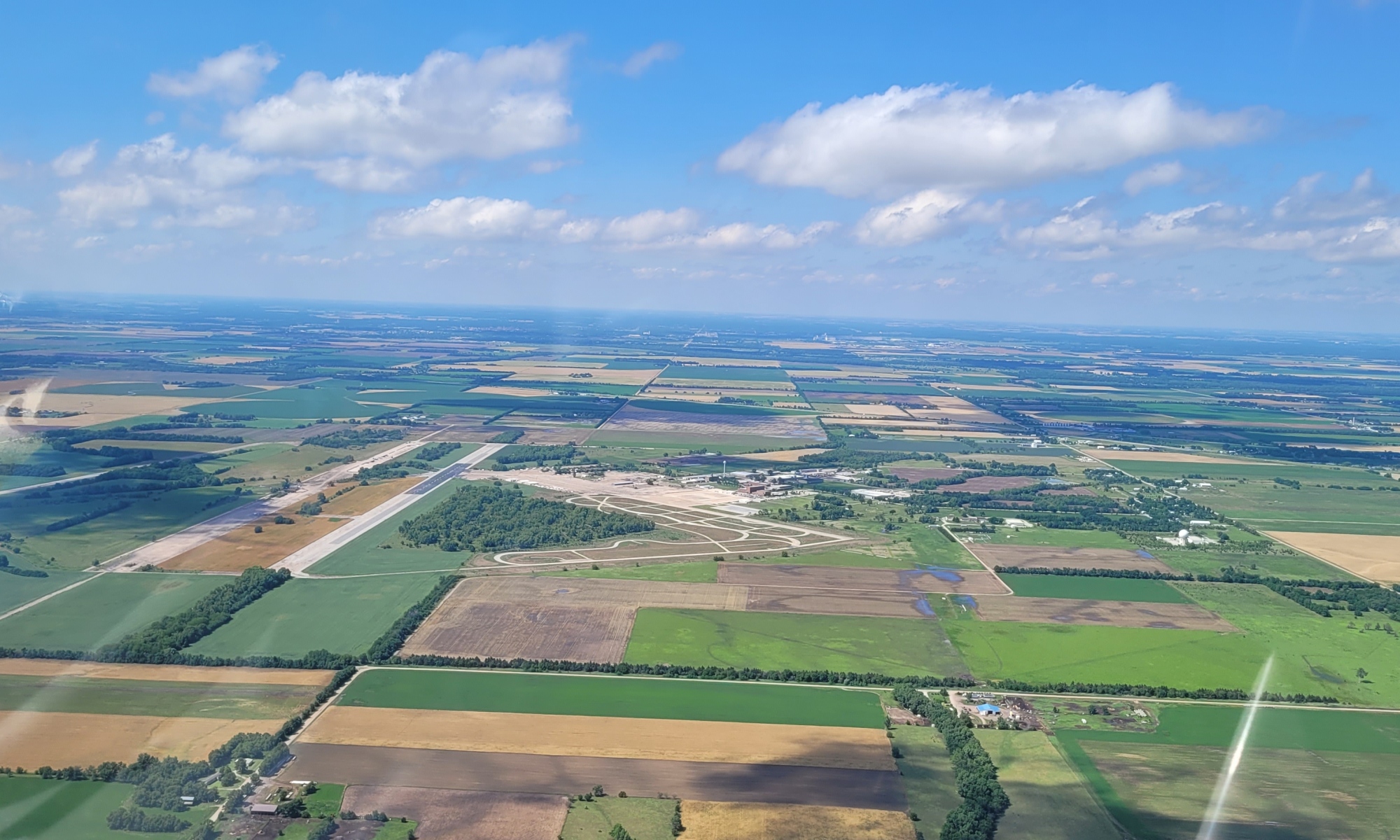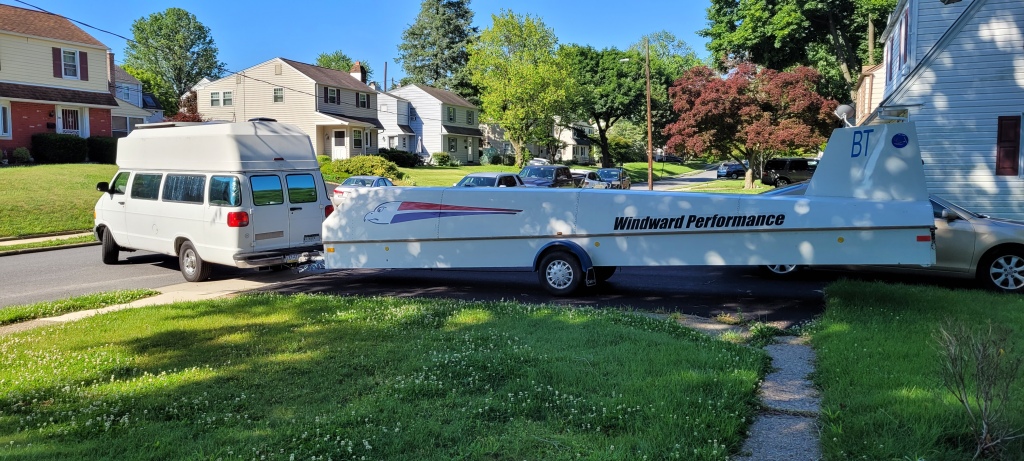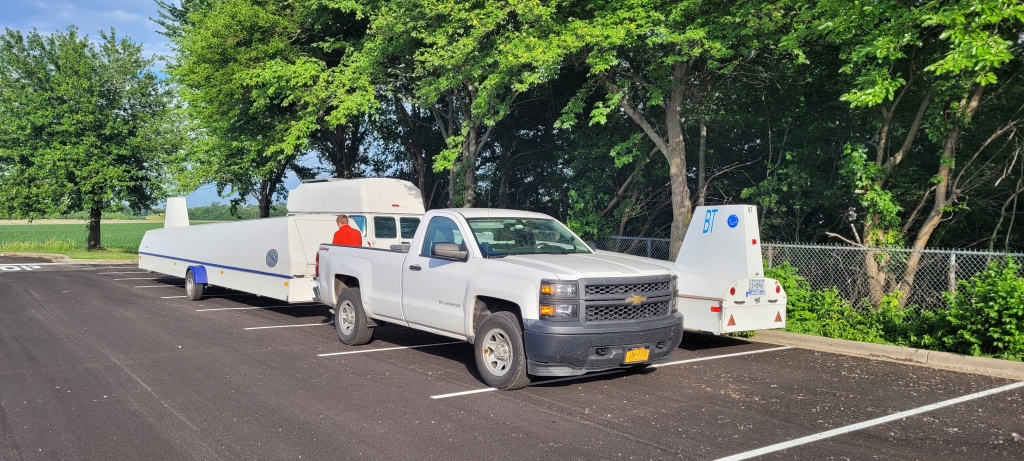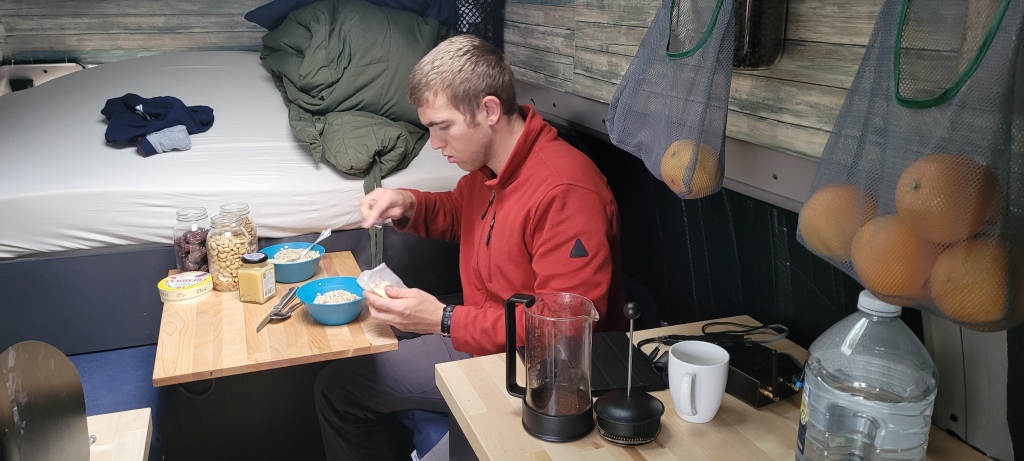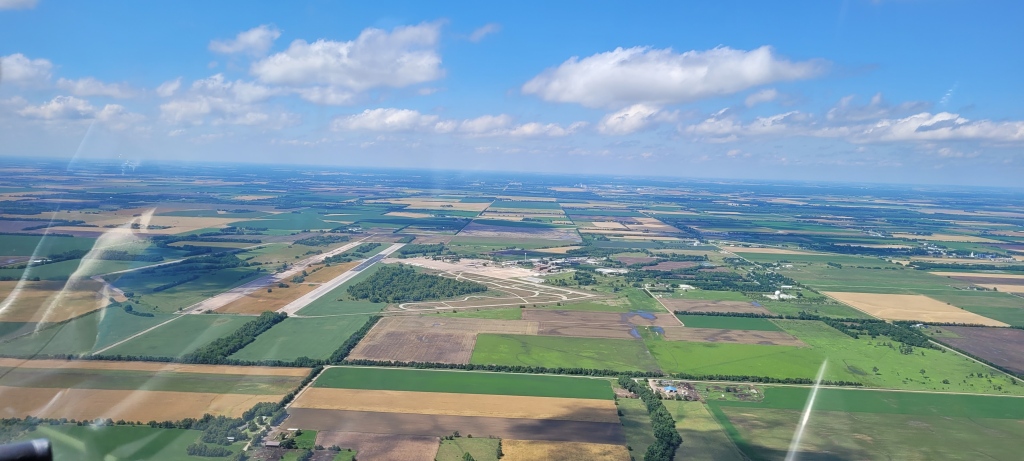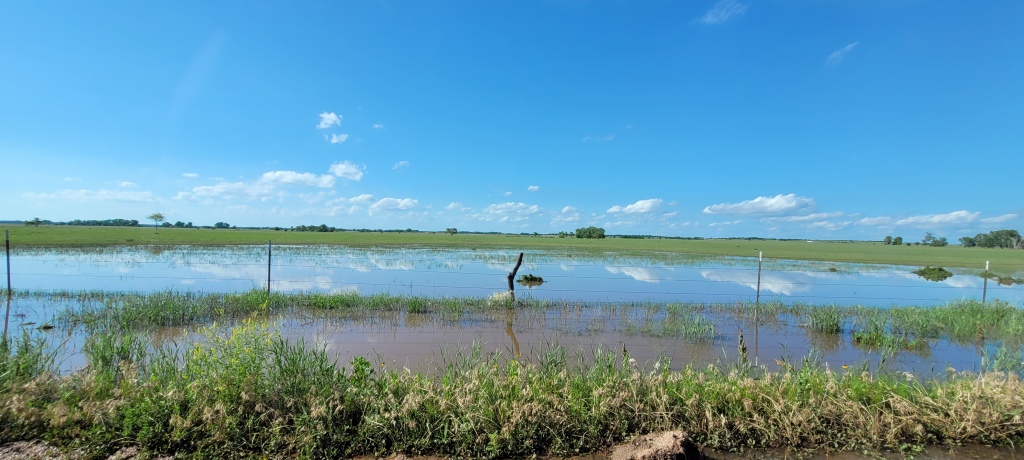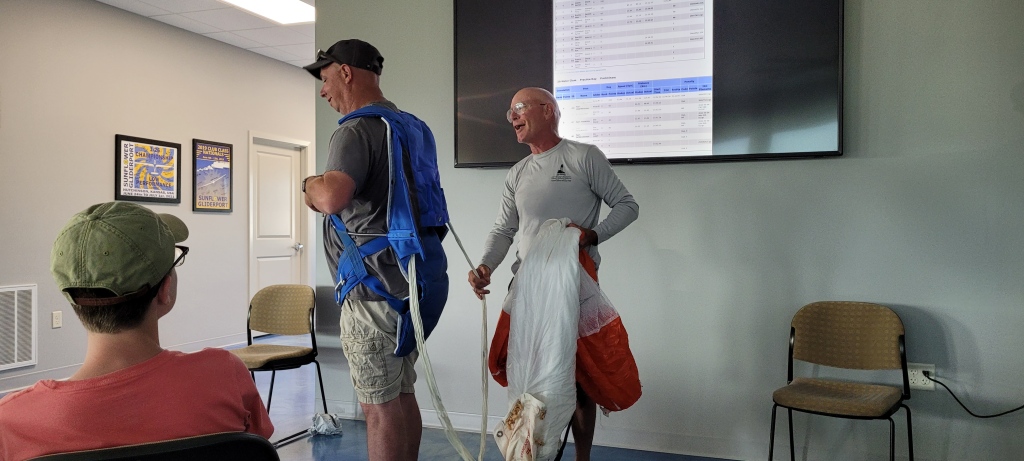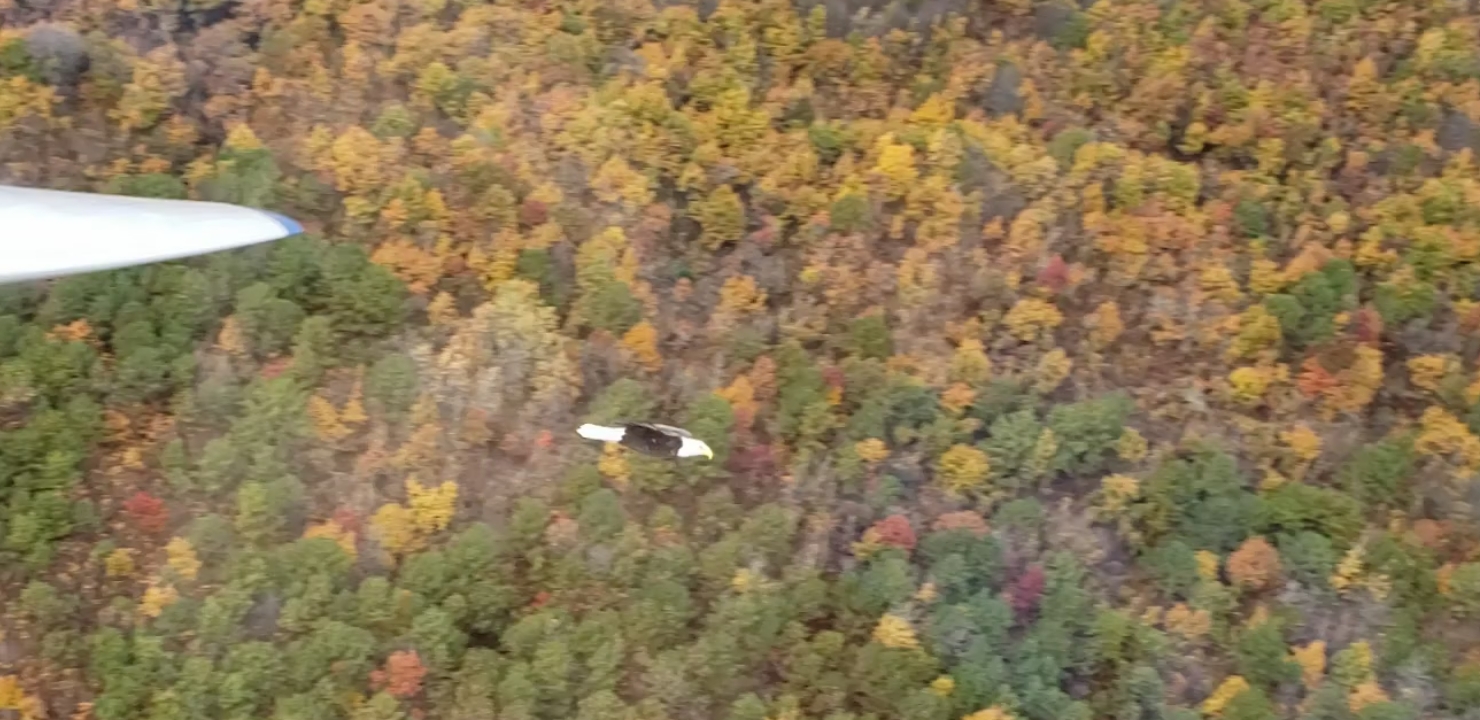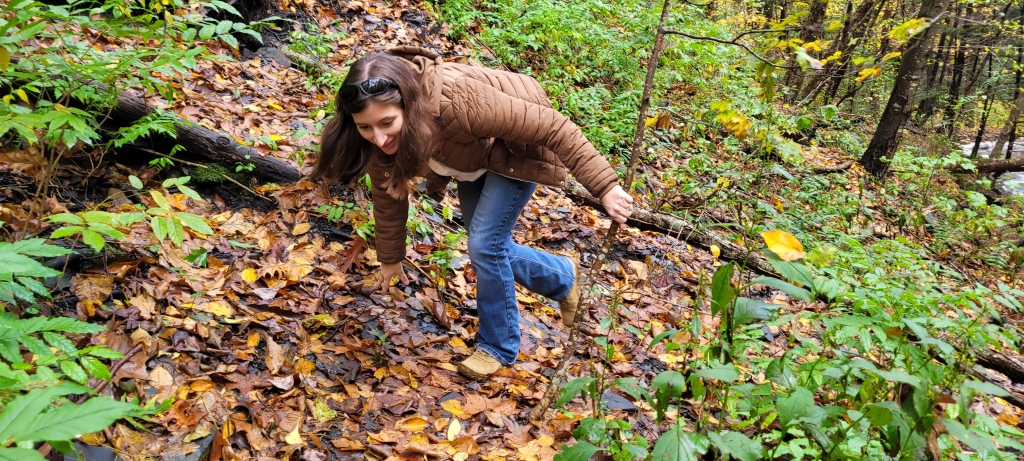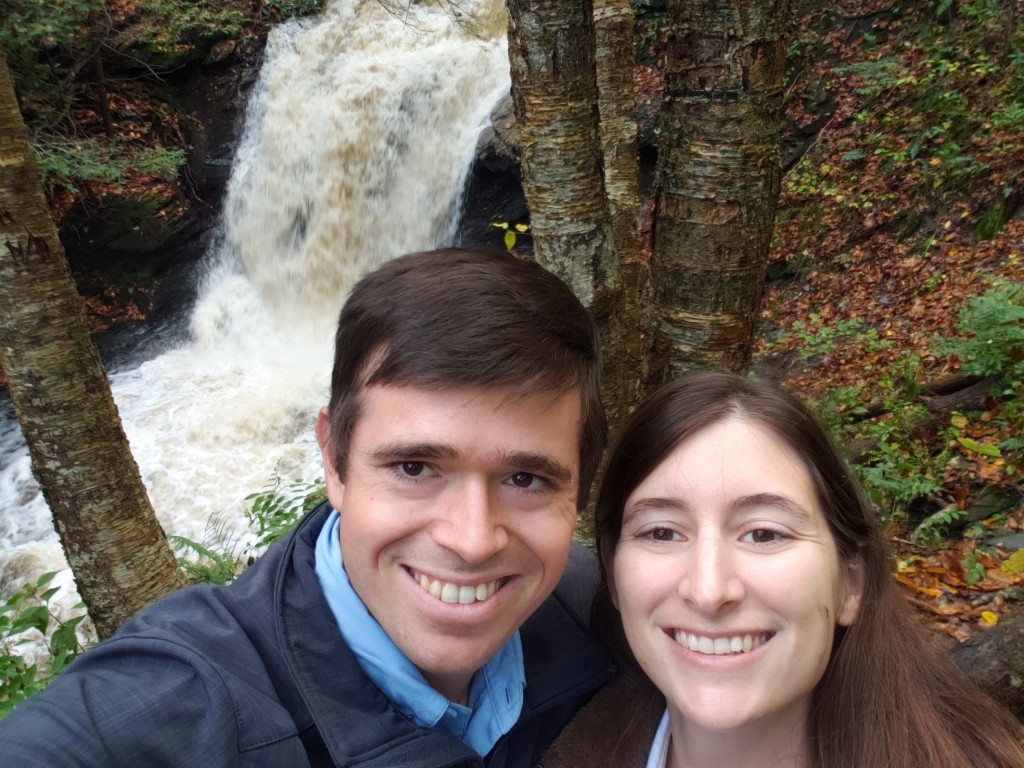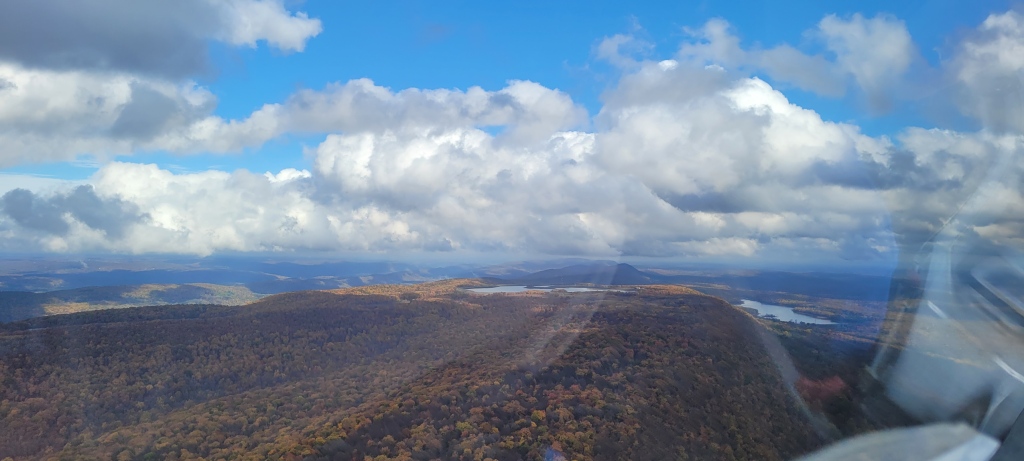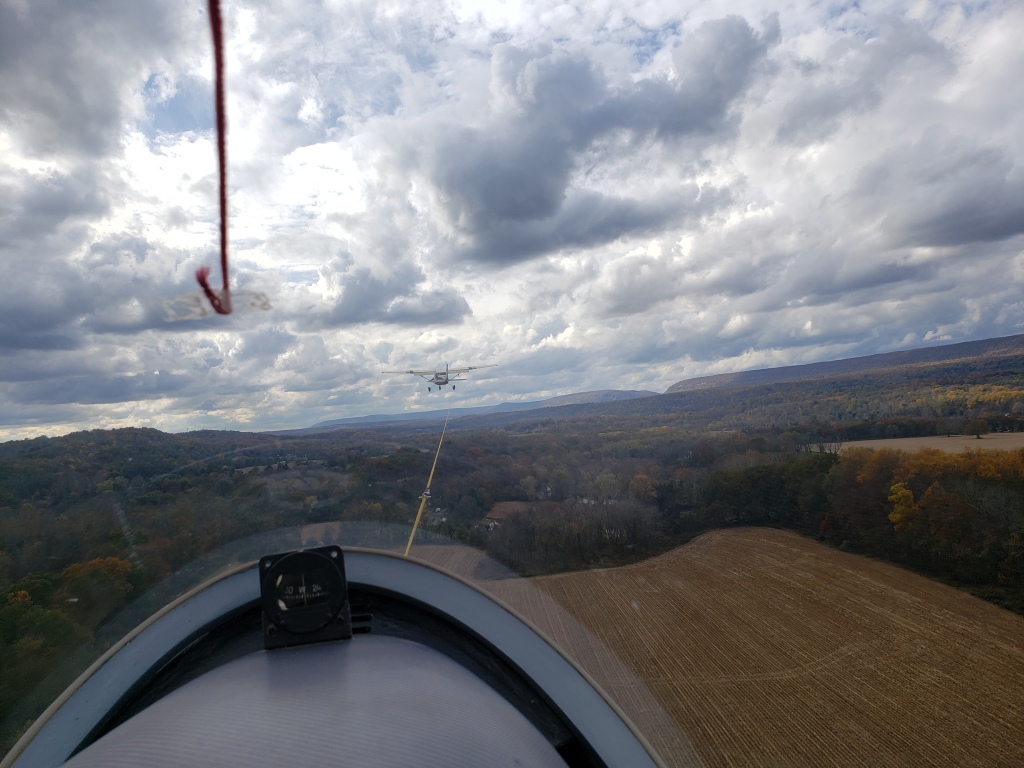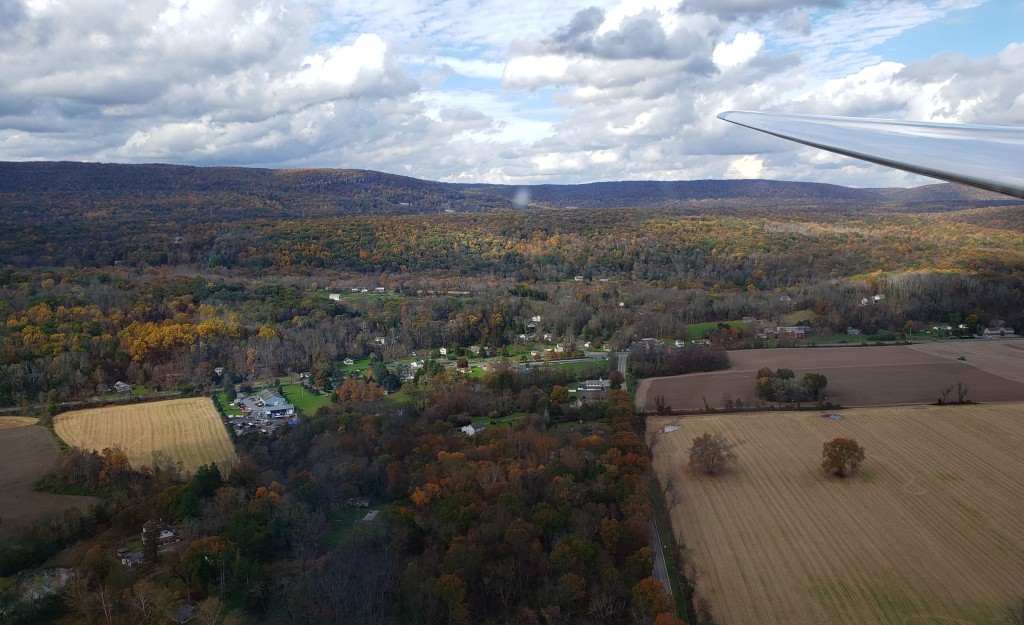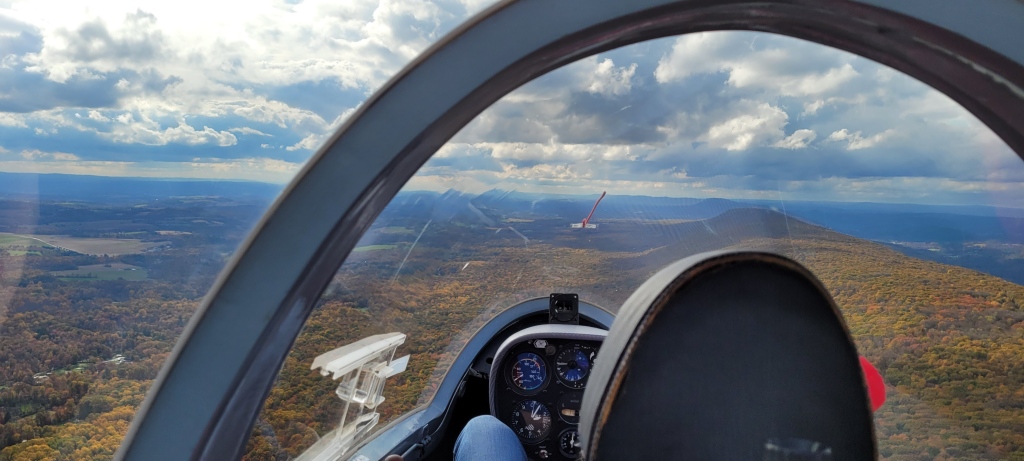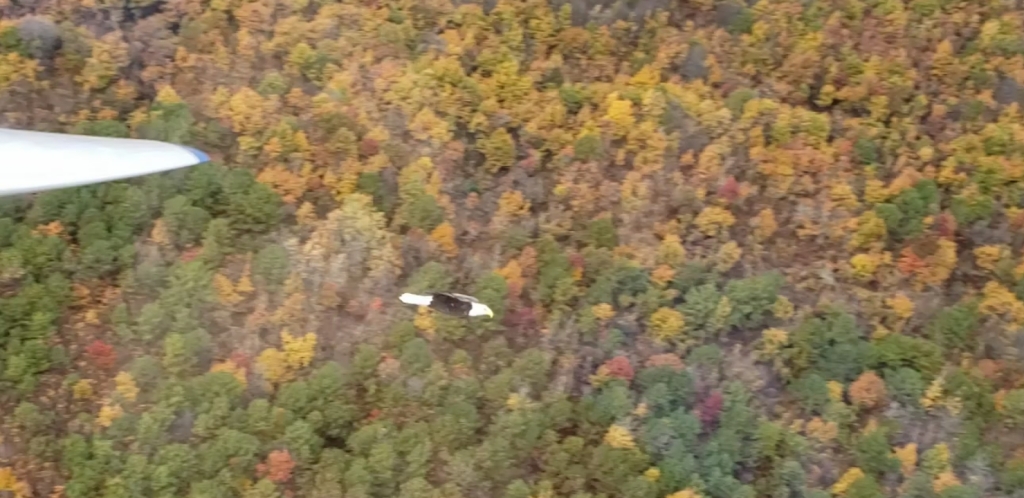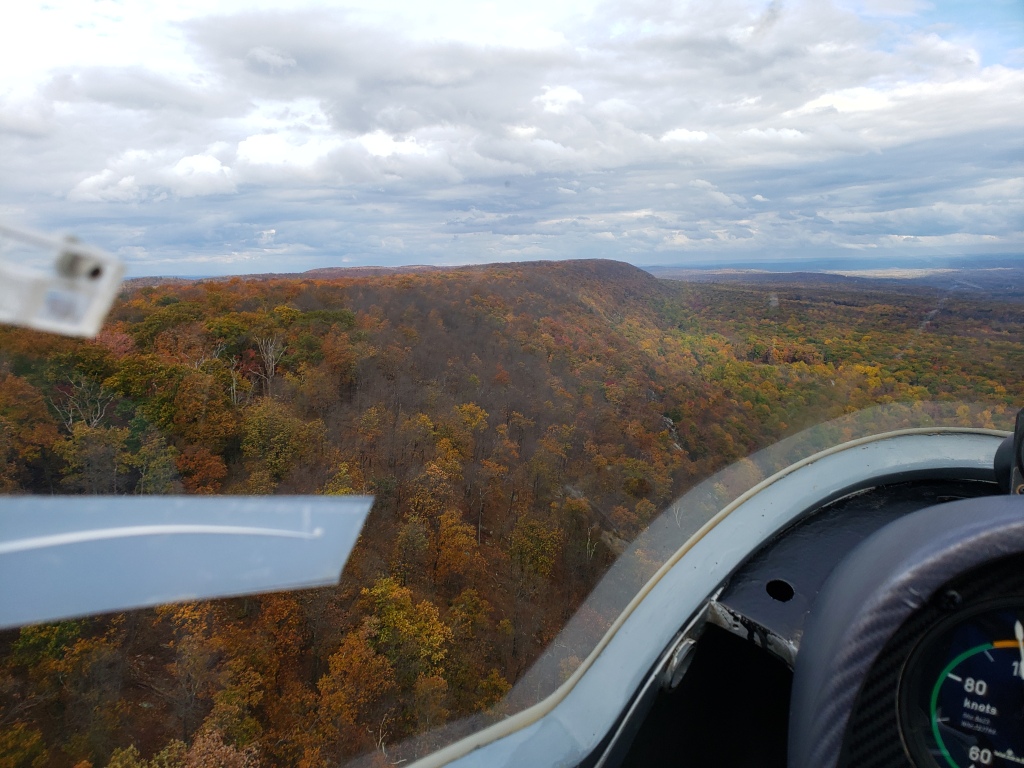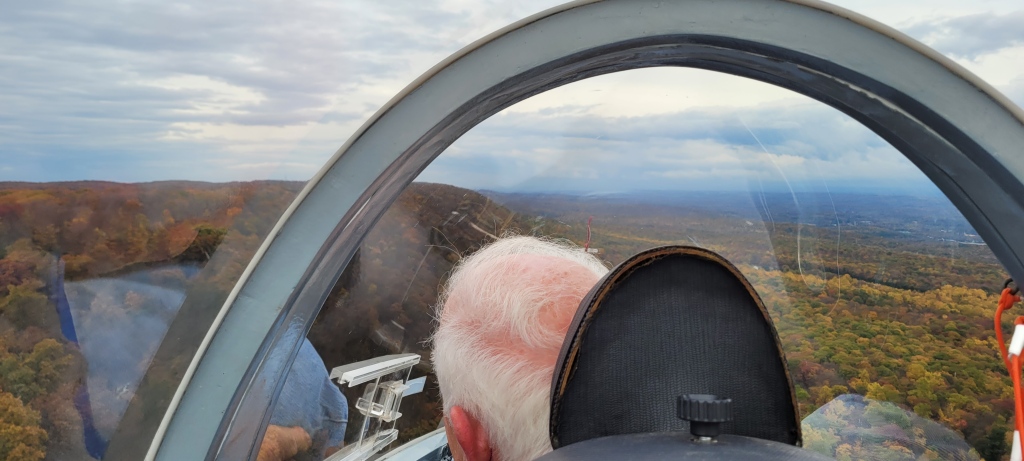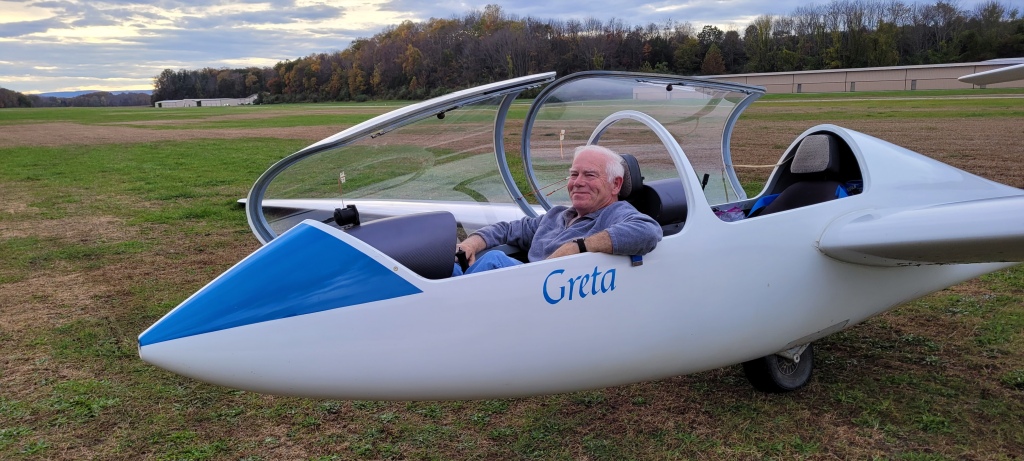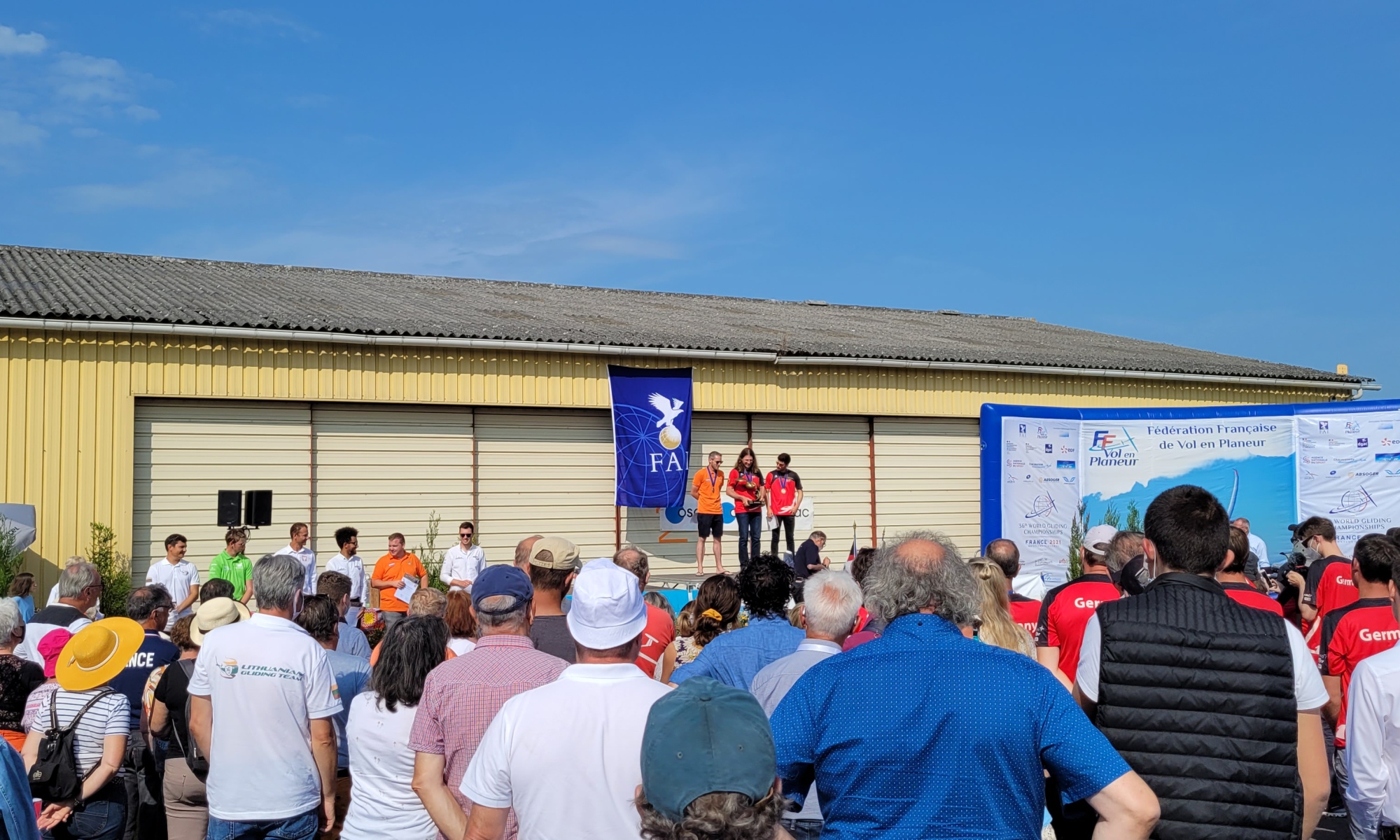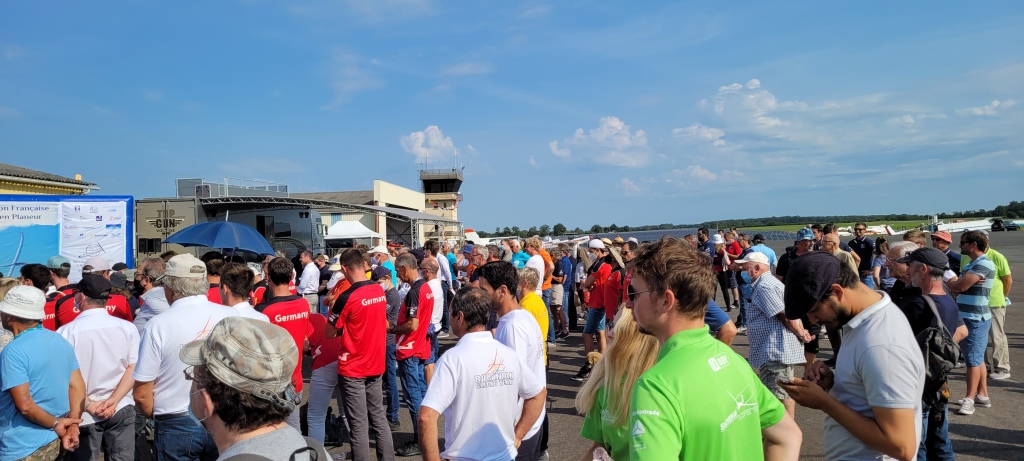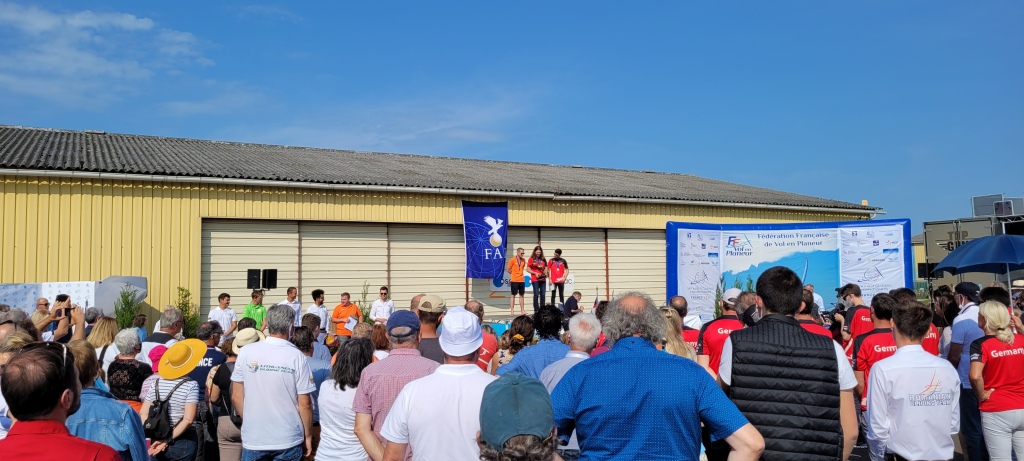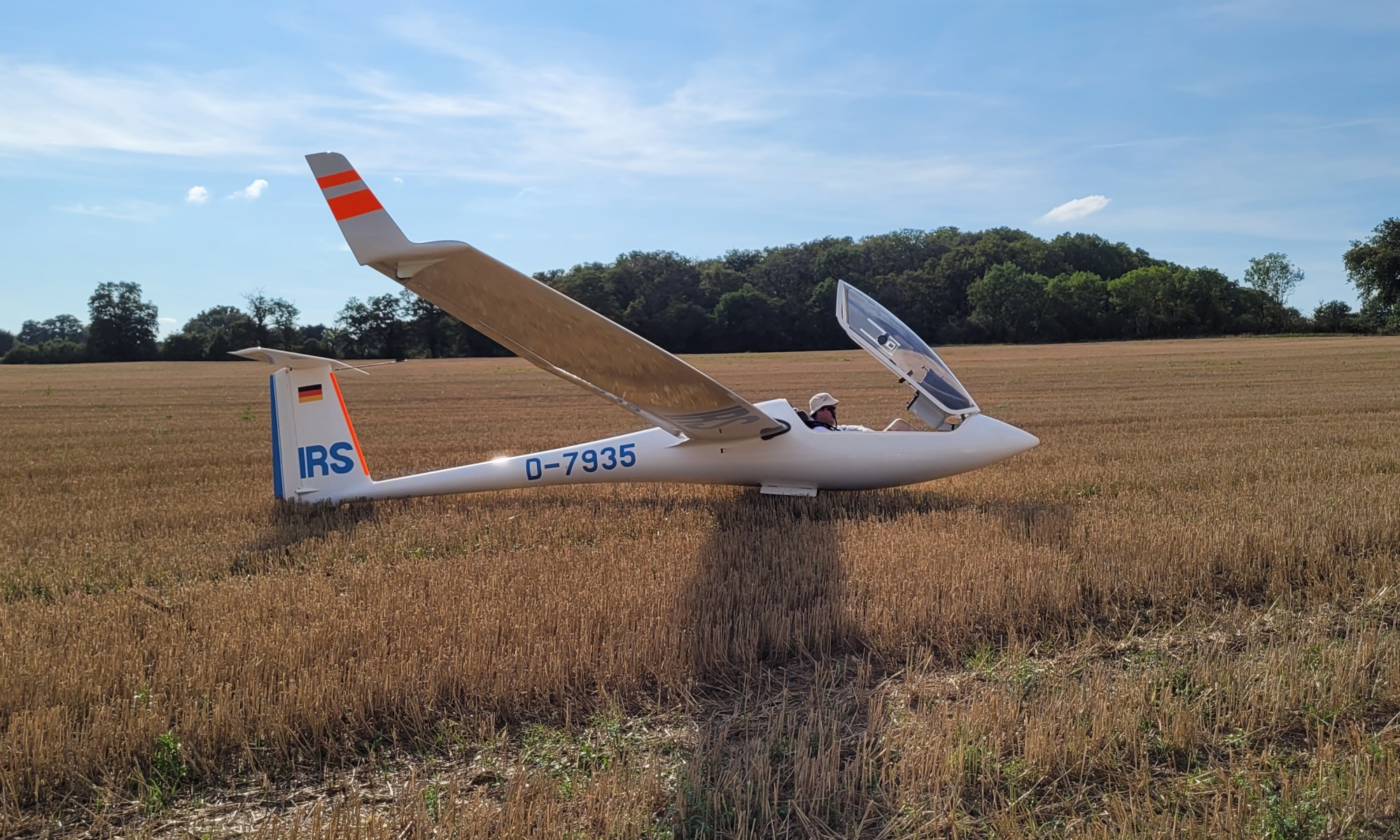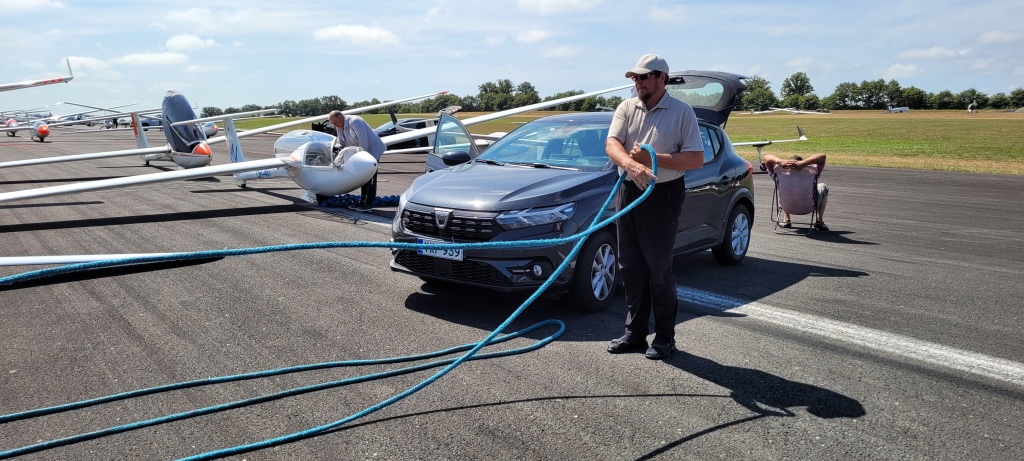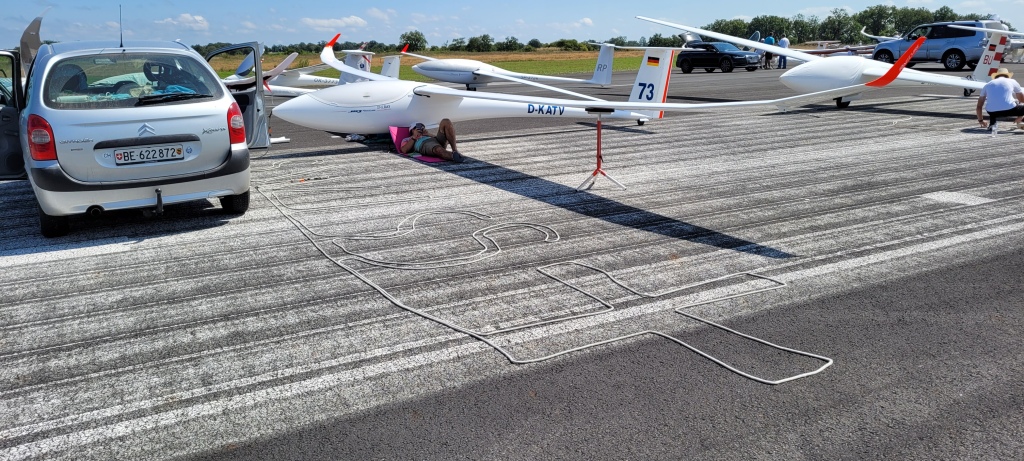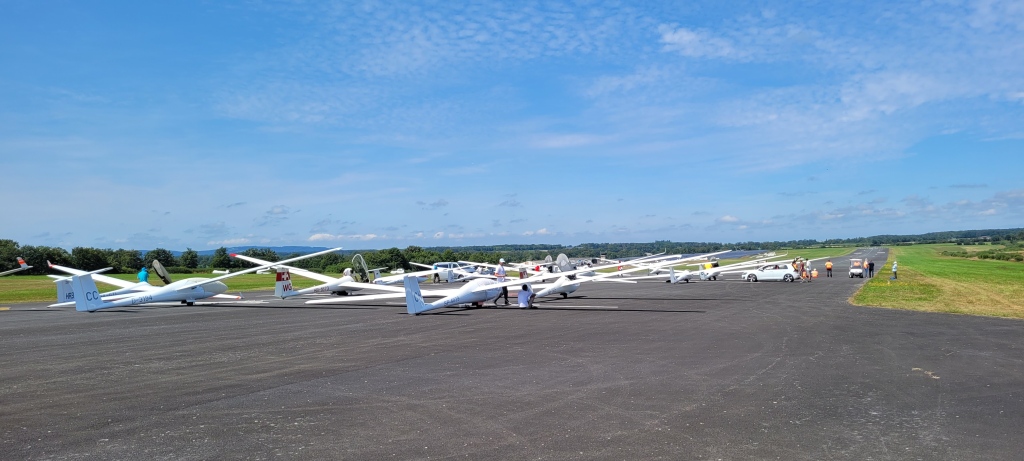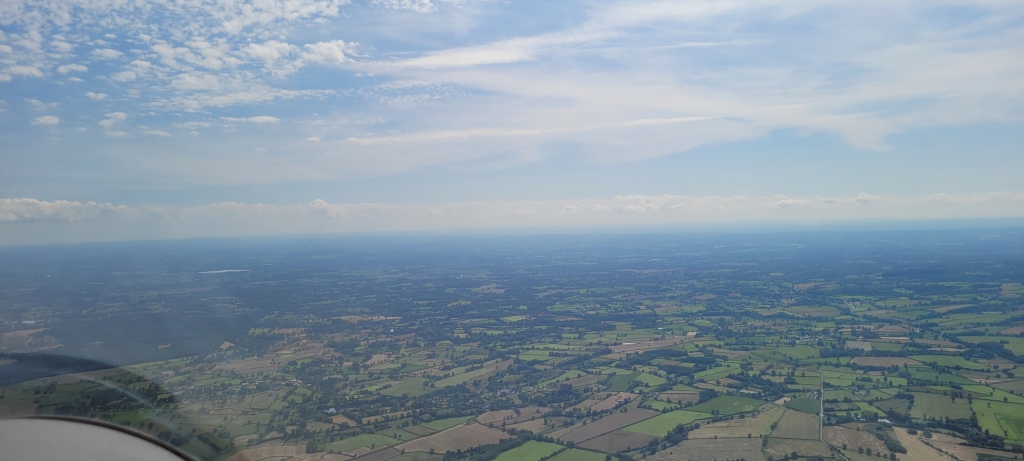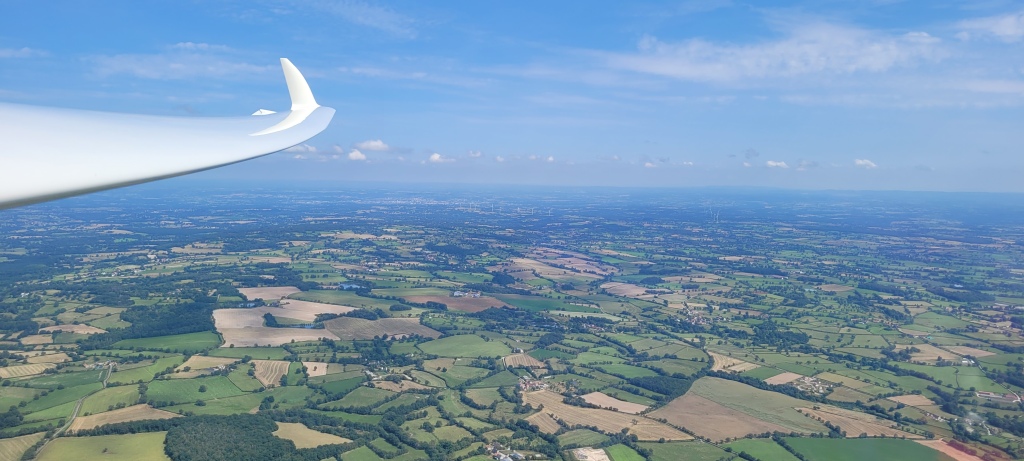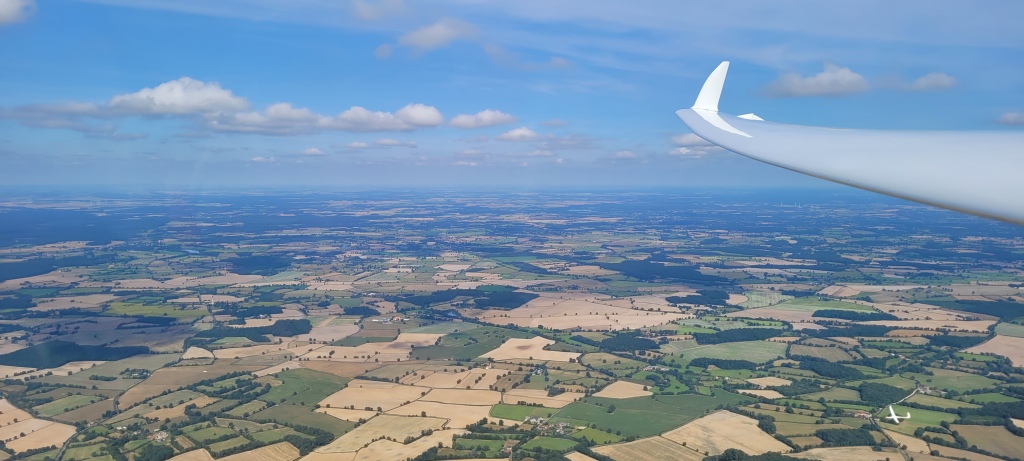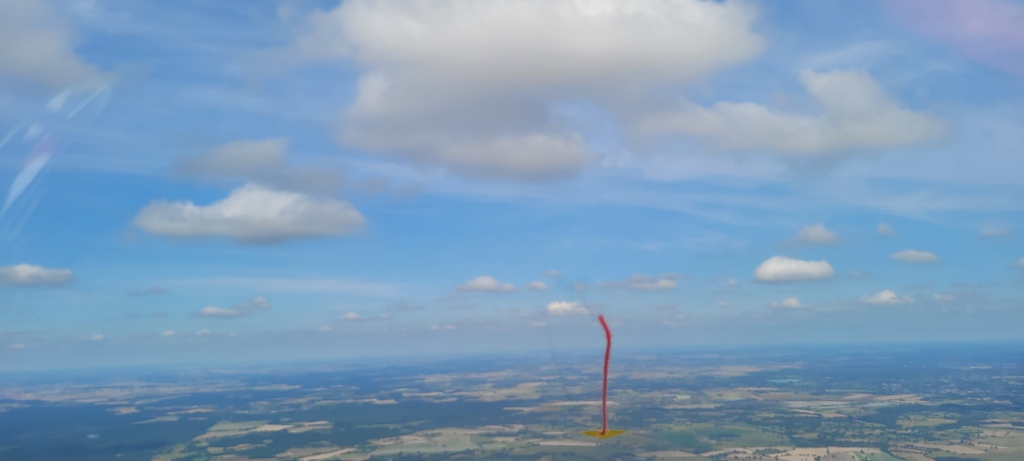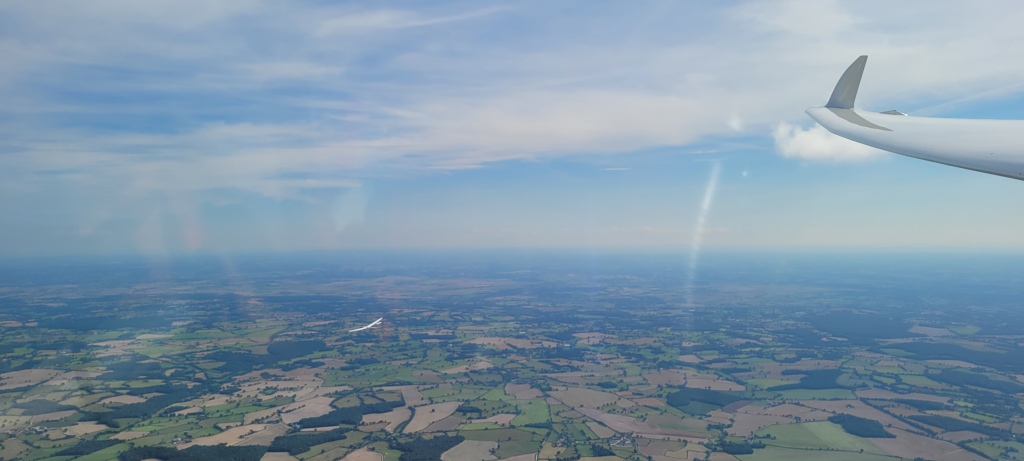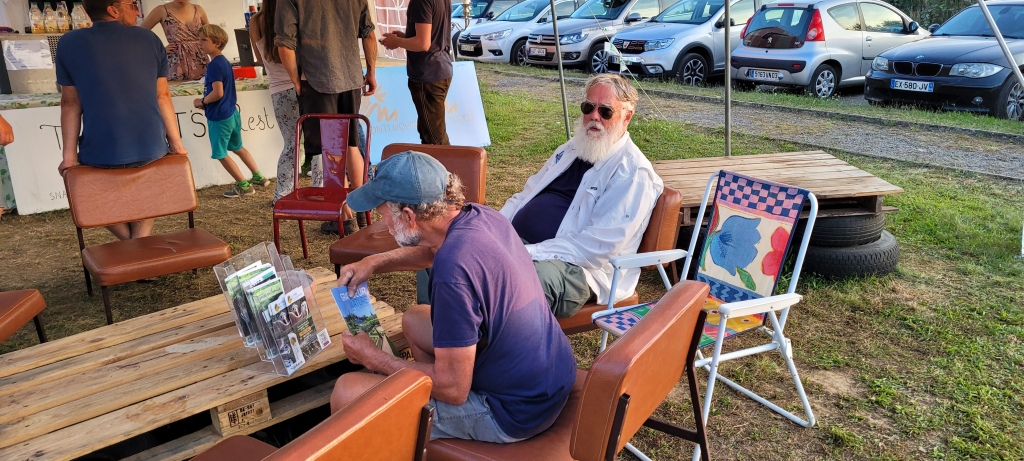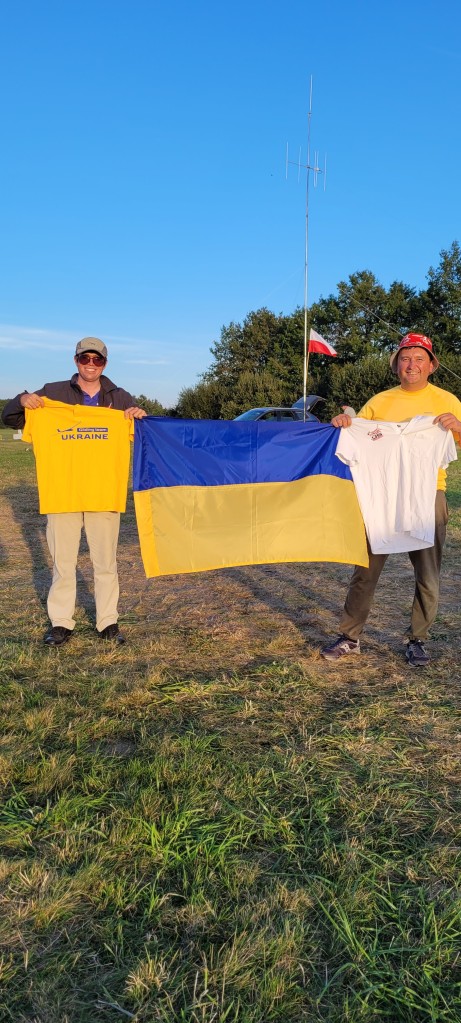It’s been a quiet year on my blog. Many folks may wonder why this is the case, but those who are close to me know that I’ve had some monumental life events that have been occupying my mind. On the positive side, my wife and I now have a lovely daughter, Anna. She’s now nearly four months and is an absolute delight. My whole life has transformed around my baby girl and soaring has been naturally put on the backburner. I have also entered my fifth and last year of my PhD, so my research and writing demands have increased considerably, causing my enthusiasm for “fun” writing to be diminished.
But there has also been a negative side to my absence – as many of you know, I had a very traumatic experience in a sailplane last year, when I crashed an Aero Club Albatross 2-33a during an off-field landing in the 2022 Little Guys Meet that I had organized. Although both my passenger and I have emerged from the crash physically intact, I have spent a large part of the past year wrestling with the more invisible mental and emotional wounds that have been much slower to heal. It has taken me a long time to be in the right mental space to finally write about the events leading to and following my crash, and I am now ready to share my thoughts and experiences in the hope that my lessons learned can be in service to others. I will first recount the accident as I remember it, and then I will delve into my reflections and lessons learned.
The Crash
Going into the Little Guys Meet, I wanted to participate from the angle of helping coach club members who were new to contest soaring. During the practice day of the meet, I flew the club Grob with several visiting pilots to introduce them to the area. I chose to drive back home to Philadelphia that night and then return to Blairstown early the next morning for the first contest day. I was tired, fatigued, and stressed and there was a lot of logistics to manage as Contest Manager. Early in the day, I flew twice with a young club member and fell out. Later in the day, the thermal conditions cycled in (interpreted generously). In the 2-33, we were flying at about 4000ft MSL, 3,500ft above the valley and 2,500ft above the ridge. The thermals for a short while were consistent and the wind shifted into an oblique, but favorable angle to the ridge. The task required going around four miles beyond the Delaware Water Gap, the last place where I was in gliding distance of the airport.
Surely the conditions would allow going out, finding a single thermal, and coming back to this spot? Besides, I was the task advisor; I noted to myself, to the contest director, and to everyone else that the conditions should support the task. There’s a level of ego involved when you’re the one that says it is doable, surely you can’t just put your tail between your legs and admit defeat? And looking ahead, the weather should hold for a while yet; it was sunny and there are a couple cumulus clouds ahead.
The troubling bit was that there are only two adequate landable options for this short foray. The first was the pumphouse field just below me. This field was challenged by the fact it had three pumphouses, each with a powerline across the field. The landable portion was in the first half, between the first and second pumphouse as the distance between the second and third pumphouse was too marginal to attempt an approach and landing. Several pilots had landed in the field in the past, I had walked the field twice and flown over it multiple times in recent flights. My visual inspection confirmed my past judgment that it was a viable out in case I got into trouble. The second field was the hang glider Landing Zone at the base of Kirk Ridge, a somewhat larger square-like field at the base of the eponymous hang glider launch site. Otherwise, it was a sea of trees and occasional fields that would barely qualify as marginal for an off-field landing.
As I glided toward the turnpoint, my judgment of the conditions was quickly put to the test. The clouds did not work and I was rapidly losing altitude. As I approached the hang glider Landing Zone, I maintained enough height to make the field behind me. Upon inspection, the field looked landable. I rounded the turn and circled several times in a weak thermal.
Looking back to the northeast, surely the ridge could trigger a thermal? It was sunny yet and I had a quartering tailwind. All I needed was to find a bubble that would gently rise as I would drift with the wind back to the Delaware Water Gap. I still had the Pumphouse Field in glide, and so I left the Landing Zone and flew back along the ridge.
There were no thermals to be found. One or two short beats along the ridge diminished my sink rate, though the lift was not enough to sustain me. At ridge top, I conceded it was time to land out and left to the Pumphouse Field.
The situation rapidly fell apart as I approached the field. Much to my surprise, in the intervening ten minutes since I had inspected the field, a 1-26 had landed there. I had flown with this pilot multiple times and had briefed him about this critical field in an otherwise tricky area, and he successfully completed his first off-field landing into it at that point. The trouble for me was that he was parked pretty much in the middle of an otherwise fairly narrow field. I judged that I could not land short of him, or safely to his sides.
With precious seconds ticking and the situation rapidly heating up, I judged that my best course of action was to over-fly the 1-26, duck down and get under the second powerline. On final, I told my pilot passenger, “There are wires to worry about in this field” and set up for a challenging approach.
It Falls Apart
The sun is shining right into the canopy and my eyes are fixed on the 1-26. The 1-26 pilot notices us on approach and runs to the front of the glider, trying to push it out of the way. I am worried about getting too close to him. My left hand is gripping the spoiler and my right foot is primed to swing into a hard slip. Then my passenger nervously interjects,
“POWERLINE!!! POWERLINE!!! POWERLINE!!!”
My eyes jerk up and I squint ahead. I instinctively back off the divebrake and trim for speed to buy myself some time to figure out what to do. Then I see the black line flash into view.
I desperately haul back on the stick.
The following episode is blurry. I hear a loud kapow as we impact the powerline. I feel the cable press across my neck like someone running their fist across my jugular, then over my cheek, and up and across my ear. The glider is still airborne, but it is no longer flying. The controls are limp as I feebly put in right rudder and left aileron. The left wing just keeps dropping and dropping.
The left wing hits the ground first and then the nose at about a 30-degree angle. I remember feeling surprised that it did not hurt when the nose hit the ground. But just as quickly as that thought ended, the rotation began, and I slammed across the right side of the glider as it pirouetted 180 degrees to its initial direction.
As the cloud of dust settles, I ask my passenger if he was OK. He is in a state of shock, but responds that he was OK. I look left and right and could see the powerline wrapped up in the glider. I take about ten seconds to reevaluate the situation, an eternity when you’re hopped up on adrenaline, and decide to evacuate the glider in the possibility that we become fried after grounding the wire. Since the right door is obstructed by the wire, I open up the left window and climb out. I then got my passenger out and laid him on the ground.
Aftermath
My passenger described feeling back pain. I gave him water, instructed him to remain still, and I coordinated the emergency response. The 1-26 pilot came running over, distraught. I assigned him the responsibility of organizing the retrieves. My mind was hazy, albeit focused on the immediate task of ensuring that my passenger was passed off safely to emergency services. There was just an almost imperceptible, but momentary difficulty in expressing the words “I crashed” when I called up my wife, who promptly got in a car and headed over to the field from Philadelphia. In the subsequent whirlwind of activity, all I concerned myself with was staying with my passenger. Once he was in the ambulance and the doors were closed, my day was over.
In the immediate aftermath, there were several people that were especially supportive. Of the people on the field, Paul Harris and Philip DuPlessis took a moment to triage the situation and make sure I was OK, I really appreciated that. On the way home, I gave a call to Phil Jones, a former club pilot, and a working therapist who has helped people work through and make sense of accidents. The immediate conversation was helpful along with subsequent ones in trying to mitigate the emotional trauma.
Once I was home, I remembered that once the shock wears off, the body will start to hurt. I started taking Aleve and Tylenol in consistent doses in that anticipation. I managed to sleep some through the night, though the mental simulations kept going on a loop, trying to make sense of what had happened.
The sequence all made sense, except the part where I “forgot” about the powerline. I could not fathom how it was possible when I knew it was there, that I still managed to hit it. The piece that came a little later was that the unfortunate distraction by my passenger pulled me out of my intended sequence of slipping down and over the glider in the field. The thing I intended to do, and the only thing I could do was to focus on the 1-26 as my aim point and then execute my approach. In my mind, there was no powerline, because the powerline was not the problem, the 1-26 was the problem. If I could simply get over the 1-26 and get down, then the situation would be solved. My passenger unintentionally made the powerline the main problem and when I tried to take a moment or two to recalibrate, I no longer had time or mental capacity to solve that problem.
Lessons Learned
In looking at the broader picture, I want to first emphatically state that I do not put any blame for the accident on my passenger or the 1-26 pilot, or anyone else other than myself. They both did what was reasonable and safe for them to do and they tried their best in their situations.
It was readily apparent to me in retrospect that I should not have attempted the task in a 2-33. Beyond being in the backseat with limited visibility, in a glider that is heavy and not very maneuverable, there is an added responsibility in ensuring the safety of the passenger. Even beyond how that should adjust general decision making, there is an added cognitive load of dealing with another person that complicates things in an emergency. Professional pilots spend a lot of time and energy training and developing systems and procedures such that two pilots are more than the sum of their parts in emergencies. As glider pilots, we don’t do that, so in “hot” emergencies, we should assume that a second person increases risk in that situation rather than decreases it. After the accident, my risk tolerances as far as flying in a two-seater in an instructional or coaching capacity have very strongly adjusted. One specific example of this is that I am much less willing to be in an off-field landing situation short of “good” airports or “great” fields when I am responsible for someone else’s safety.
Naturally, there are a million contributing variables to any outcome. The most notable one here is that I misjudged the conditions. There are times when the thermal conditions at the spot are pretty low, but the thermals remain consistent along the ridge. I felt that the cycle was still on the upswing, whereas in fact it had already peaked when I made the decision to go.
With respect to the landing options, they were adequate, but just barely so. Once you introduce other complications, these options become marginal or unmanageable very quickly. On the one hand, it is possible to say that we should not consider such landing options as adequate. On the other, doing so precludes the ability to fly in that area, which is an area we routinely soar out of Blairstown. Blairstown is a technical site and some areas are simply tricky. I compensated for that through extensive local knowledge. The part that yielded the outcome was not, in fact, that there was anything “wrong” with the field; the 1-26 pilot clearly demonstrated that when he made a safe landout. The main issue was that the field became unusable in the ten minutes since I had scoped it out.
Among the other contributing variables were fatigue and pressure, both internal and external, to attempt the task. I was the contest manager and a task advisor. The following day was not likely to be taskable, so we were looking at the whole fun meet being washed out. So, there was a degree of pressure and ego wrapped up in showing that in fact the task was doable. It was not that I cared about the points or winning; if I cared about winning, I would have flown the Duckhawk instead. While I don’t feel that the pressure to Go was an overriding variable, it was one of the factors that contributed to the outcome.
In the months that followed, I nursed my wounds, physically and emotionally. Physically, the muscles on the right side of my body tightened up from the bruising. I went through extensive physical therapy to regain mobility in my neck, and I am still only about 90 percent of where I was when I was healthy. Emotionally, I was wrecked by the accident. It was completely apparent to me that I was a millimeter from bleeding out to death. I feel as though that I exist in a quantum state, one which died at that scene and one which exists in this place of writing. The feelings associated with that are bewildering, in negotiating the joys of being alive, with the stark reminder of the fleetingness of our existence. It could be described as leaving a sort of exoskeleton at the site of the wreck, with a degree of freedom in knowing that every day that comes after is a gift.
With respect to my personal attitudes toward soaring, I had to navigate two unsavory thoughts. The first was that my accident was entirely a product of bad luck. The trouble is that accepting this explanation would be to accept that the risk in the sport is uncontrollable. When you’re married and have a baby, this is an unacceptable feeling. The second is that my accident was entirely a product of bad judgment. The difficulty here is that to accept this would be to excise the things I love about the sport. Ridge soaring, competitions, wave, badge and records, along with novel and interesting distance flights are the kinds of things that motivate me. I am not at all interested in becoming a “gentleman” glider pilot that shows up to the airport, floats around the patch, and lands and drinks beer with the buddies. Sure, when I’m not all that proficient as I am occupied with more important life goals than soaring, I am not going to go off and fly gliders to the limits. But that fundamental machinery that is built on those experiences is still there. It’s the machinery that made me a national champion, holder of a world record and several national records, four-time member of the US Team, and the first person to do a 1000km flight in a 1-26.
On a personal basis, I reconcile these two unsavory thoughts by saying that there is truth to both, but that the combination of both is what makes the truth. When you fly a glider, you cannot control all outcomes; it’s inherent to the sport. If you get caught with your pants down when you’re low, there is little to no recourse as to what you can do. That risk is always there, and at some level it is also what makes the sport real. I have over 2000 hours in Condor, but none of those hours were as good as being up there and actually flying. The risk is also somewhat mitigated through risk tolerances and judgment. On this flight, I made mistakes, though I don’t feel that my choices were wholly unreasonable either. I methodically went through my decisions, and then the situation was not as I expected it. In accepting this explanation, I have to accept that there is a level of risk that I cannot control for each flight and that it could still kill me. In the months since, I have negotiated these thoughts and have accepted that the risk of the sport is worth the wonder and joy that it brings. The means and manner by which I go about the sport, that fluctuates based on where I am at in my life and my flying.
Unfortunately, others were less supportive of my process of reintegration within the sport. Aero Club Albatross, through the Safety Committee, grounded me after the accident. Their report concluded that the fundamental error was the Go/No-Go decision of going cross country at the Delaware Water Gap. The Safety Committee then recommended suspending my cross country privileges pending extensive reeducation and that the fundamental problem in flying was my Aeronautical Decision Making (ADM), especially as it relates to ridge flying, badges/records, and competitions. The ACA Board of Directors accepted their judgment, although softened the “punishment” by taking out the provision that my cross-country privileges were to be suspended. At a subsequent awards banquet, I was mockingly “awarded” the Dodo Award for nearly dying. One Safety Committee member explicitly advised me to “lay low” for a while, and to get my Flight Review completed elsewhere.
It was readily apparent to me that the club that I had grown up in was not going to support me through my accident. Instead of helping me get back on my feet, there was much greater interest in tying the accident to past grievances and to squash any future sporting goals. At best, my soaring would be tolerated rather than supported. And certainly, if I had any other kind of incident or accident in the future, I could probably expect much worse from the organization. While I am not entitled to the club’s support, there is a strong bitterness that stemmed from the organization’s response. The reason I was flying the old 2-33 to try to help the club. This was not because I have a strong intrinsic desire to fly around in an old, crappy glider, but because I feel a strong desire to grow our sport and support incoming pilots. Instead of offering me a hand to help me up after the accident, I felt constantly pushed down by the club members responsible for the organization’s official decision making. These are the principal reasons I am no longer an active member of Aero Club Albatross.
Since then, I have found extensive support outside of my former club. For one, David Bradley at Beltzville Soaring Club has been very welcoming. He has done my flight review, helped me get back into flying with his Pegasus and has been gracious in letting me fly his J-4 Cub. Michael Opitz lent me his Discus2b to fly at the Dansville Club Class Nationals. It is thanks to these wonderful folks that I am back in the sport.
